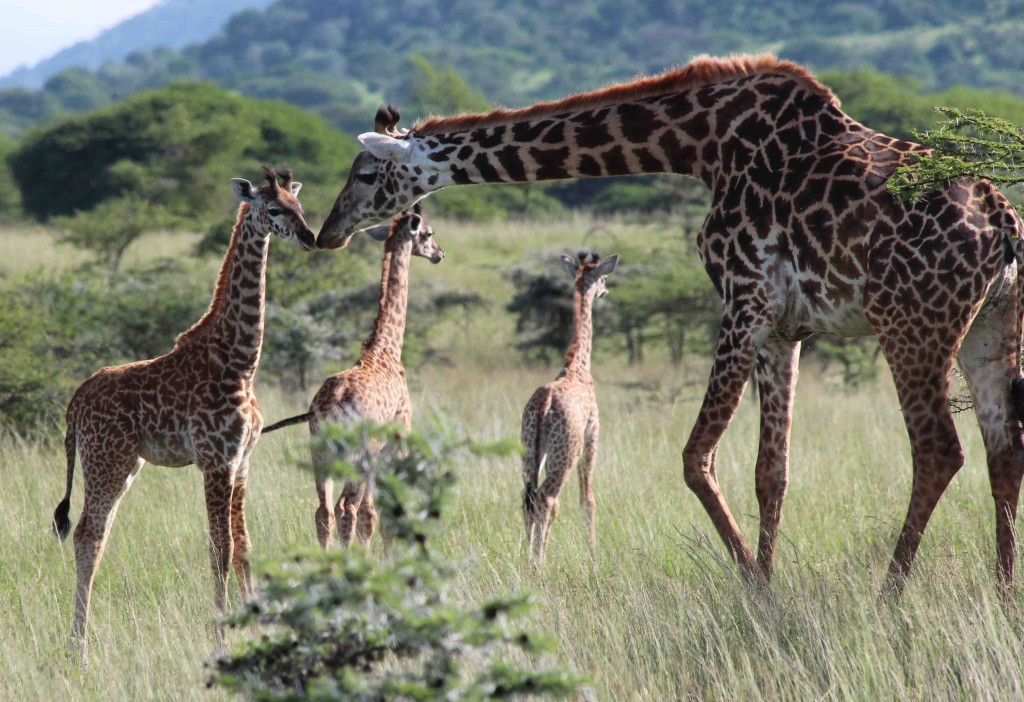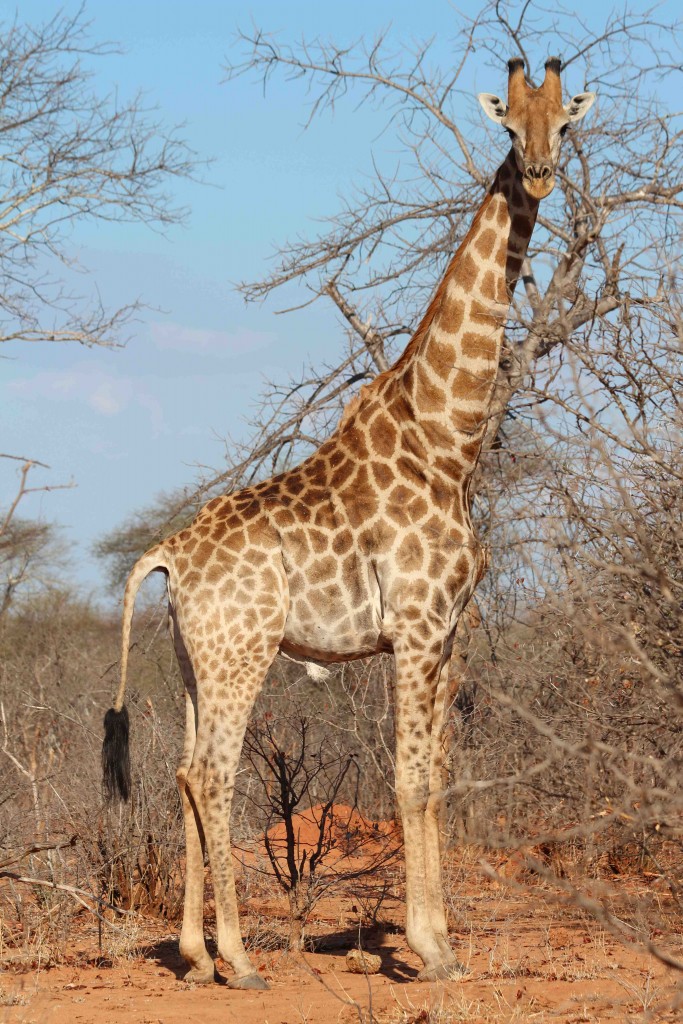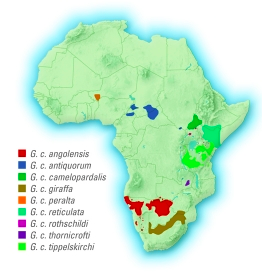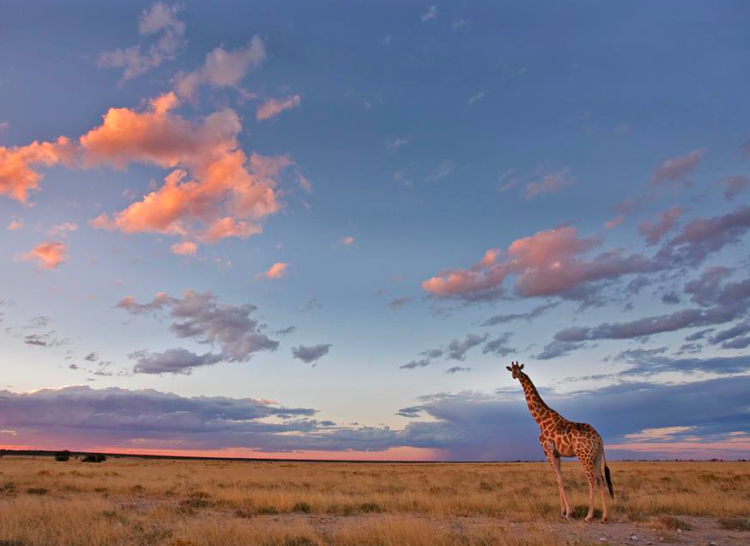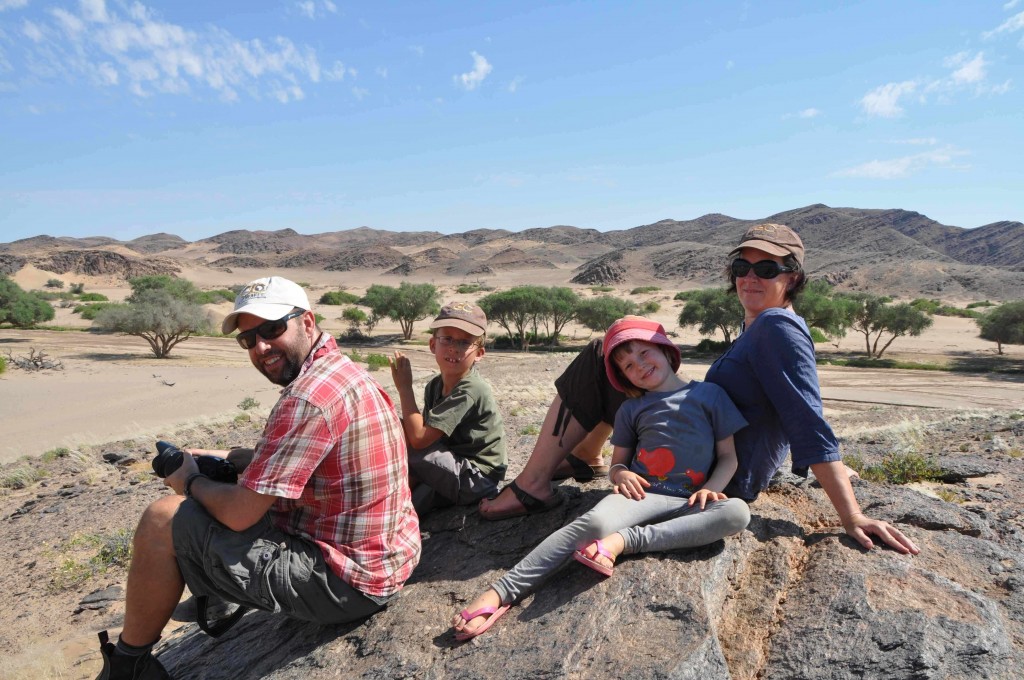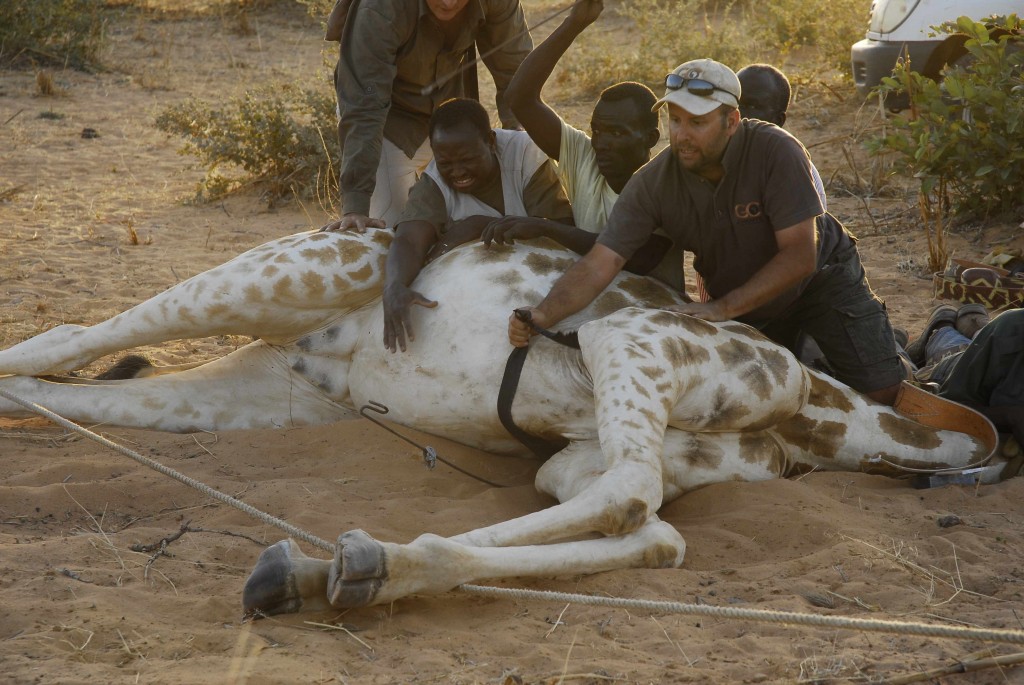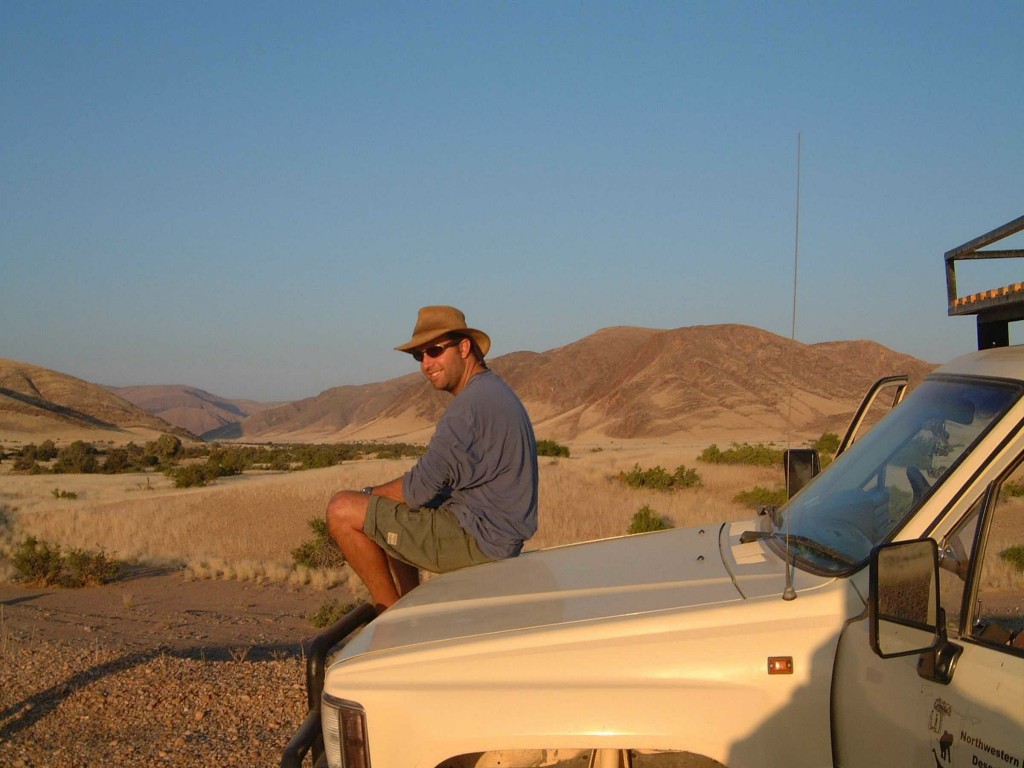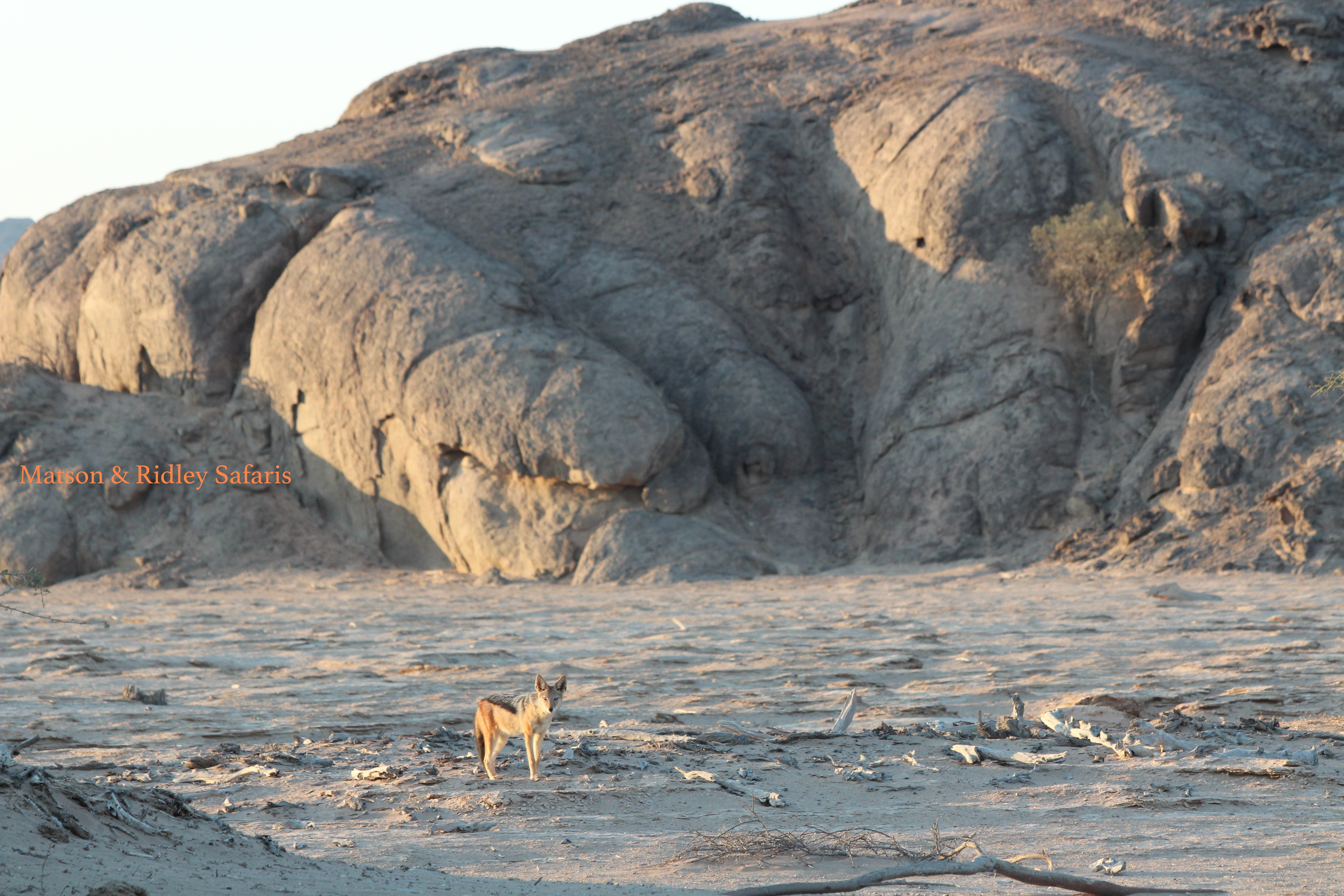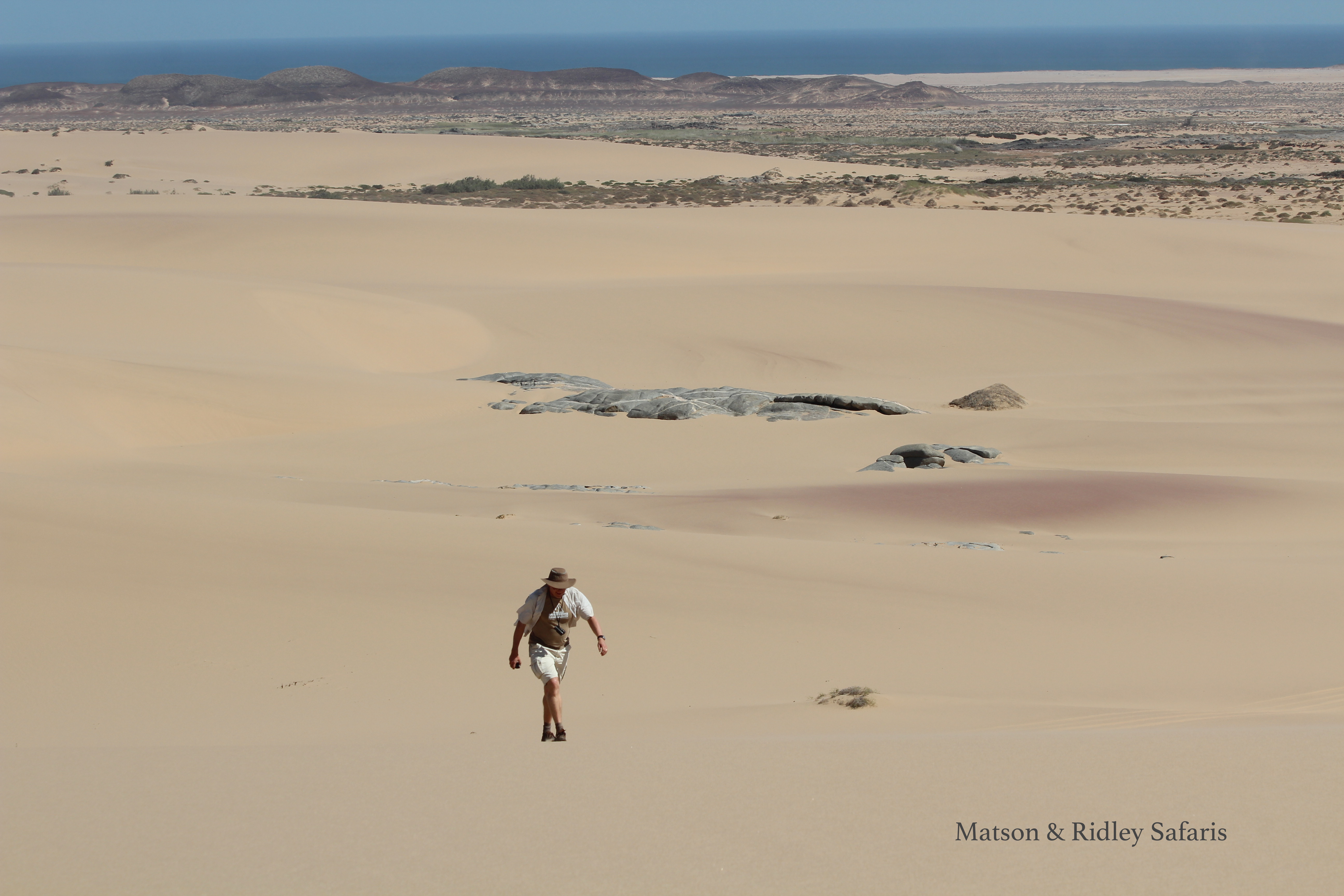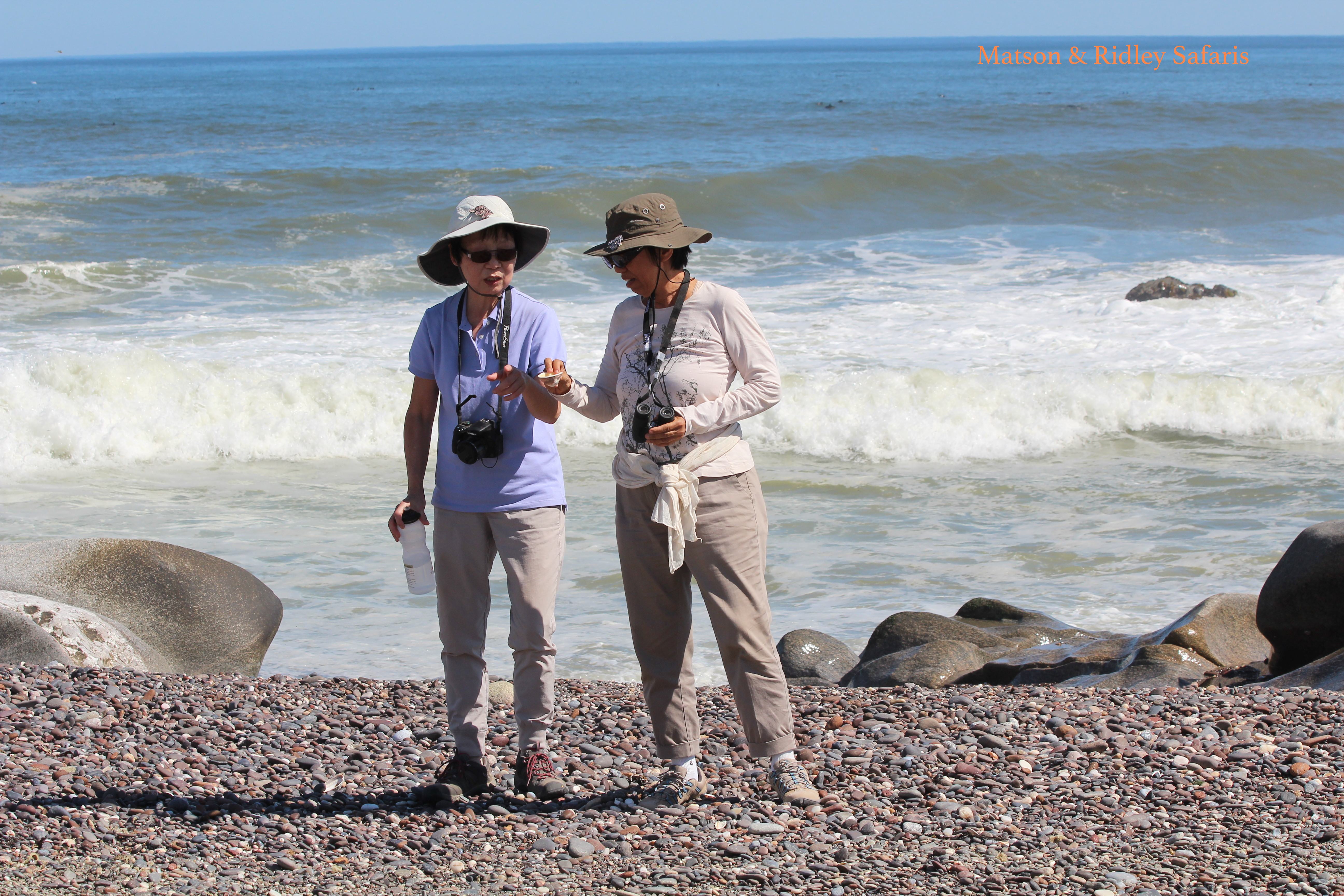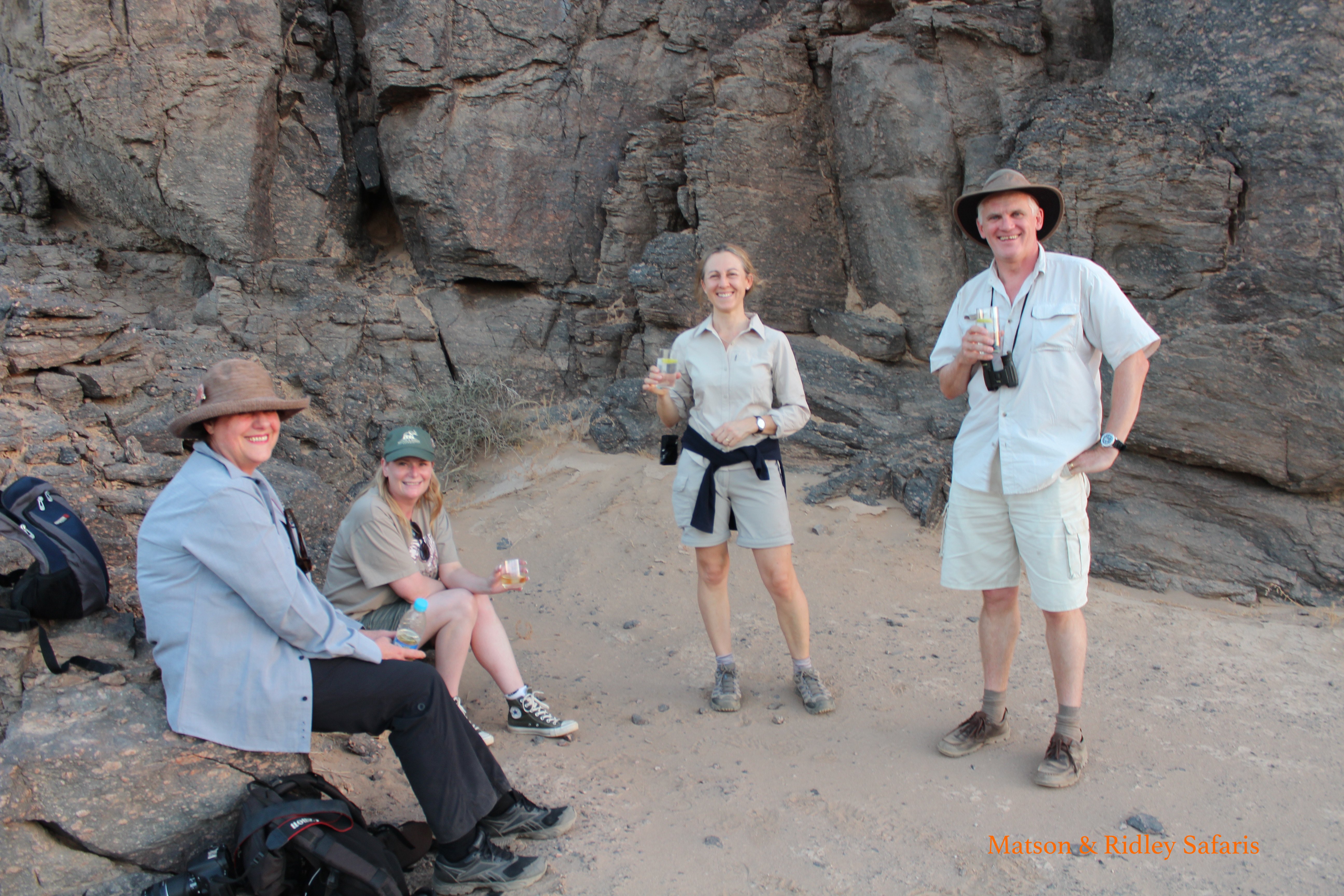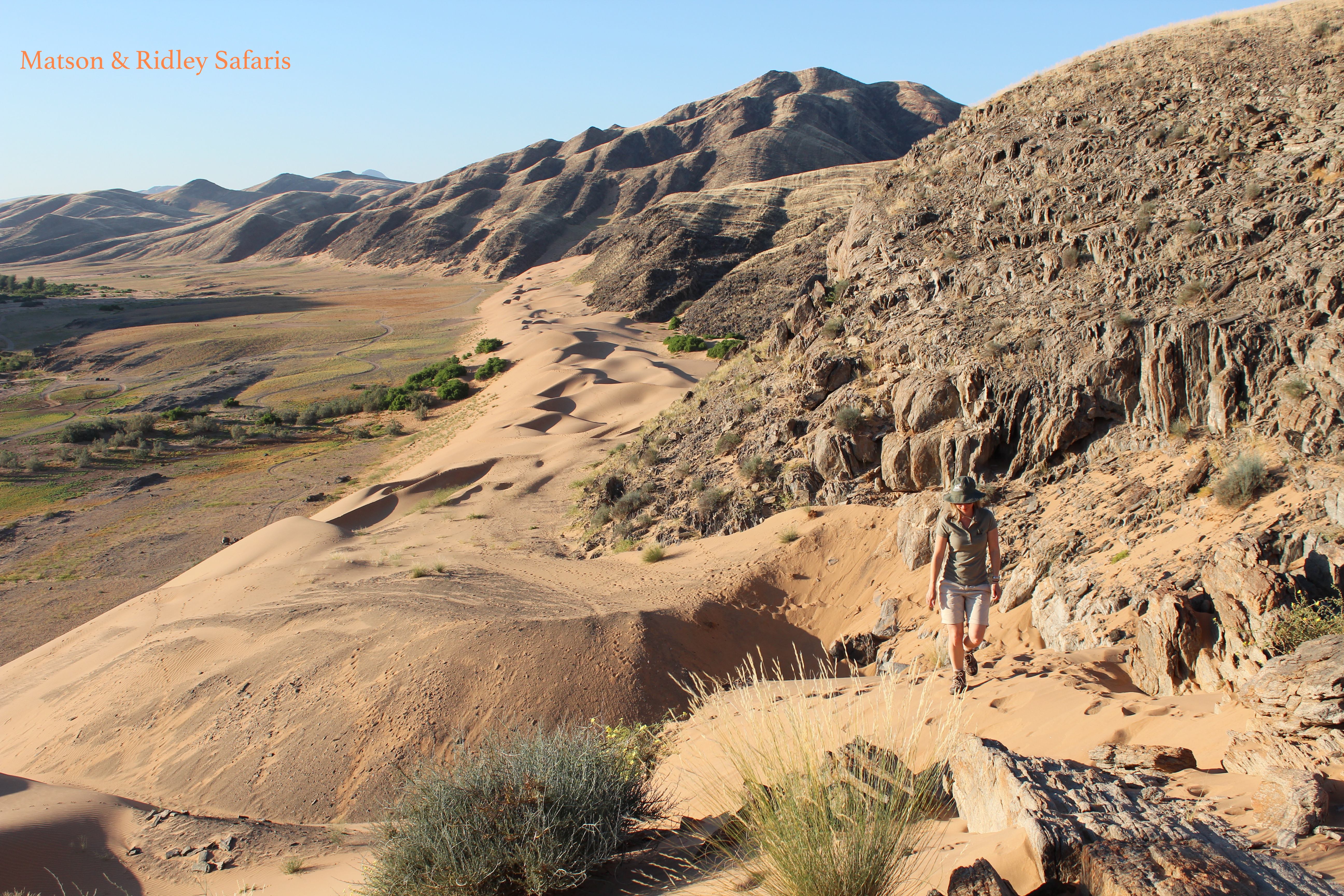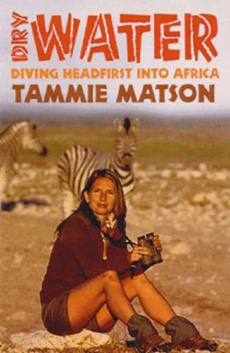The Secrets of Giraffes
Years ago when I first moved to Namibia to start my PhD on the black-faced impala at the age of about 21, a couple of Aussies and a German who were working there at the Desert Research Foundation of Namibia adopted me and helped me find my feet in this unique desert land where I didn’t know a soul. The war vet invasions had just started in Zimbabwe, and, well, if you’ve read my first book “Dry Water” you’ll know the rest of the story! Over a decade later, two of my early rescuers, fellow Aussie Dr Julian Fennessy and his wife, German Steph Fennessy, are living in Windhoek and raising their two kids in Namibia whilst also working on giraffe conservation across the continent. Together Julian and Steph started and run the Giraffe Conservation Foundation, the world’s first and only organisation dedicated to giraffe conservation in the wild.
Julian is a true giraffe guru. He is the founder and co-chair of the IUCN SSC Giraffe and Okapi Specialist Group and completed his PhD on Namibia’s desert-dwelling giraffes. You won’t meet a couple more dedicated to the conservation of giraffes in the wild. There are few species more iconic and representative of Africa than giraffes, and I’ve seen them pretty much everywhere I’ve ever travelled in Africa, so why are folks like Julian and Steph worried about their future?
How many species and subspecies of giraffes are there? And what countries are they found in?
What is the status of giraffes in the wild? Should we be concerned about them becoming extinct?
As a species, giraffe are currently listed as ‘Least Concern’ on the IUCN Red List – however, this is more as a result of no recent assessment being undertaken on them. In 2008 and 2010 the West African (G. c. peralta) and Rothschild’s (G. c. rothschildi) subspecies of giraffe were listed as ‘Endangered’ – based on the work of GCF, and currently the species and all subspecies are being assessed by the Specialist Group – the first-ever detailed assessment for giraffe and we hope to complete this by early 2016. We obviously feel that giraffe need more attention locally and internationally as – and why? West African giraffe number less than 400 in the wild, Rothschild’s giraffe approx 1,100 and Kordofan giraffe less than 2,000 individuals. Few know that giraffe number less than 80,000 in the wild (less than 5 times the amount of African elephant) and have dropped greater than 40% in the last 15 years alone!
Tell us more about the threats to giraffes and what can be done about them. Specifically can you tell us what GCF is working on to conserve giraffes in the wild?
When we set up GCF in 2009 we realised that no one was giving giraffe any real attention – the Forgotten Giant! Everyone assumed that giraffe are everywhere – and on some safaris it feels like that – however, the more and more we look into the situation the more precarious the situation is. The usual suspects – habitat loss and fragmentation, combined with human population growth and demand for increased resources and agricultural land is big. Combine this with illegal hunting (poaching) and giraffe are seriously being threatened across much of Central and northern East Africa. Over the last few years GCF realised it cannot do everything itself and as such has built (and keeps on doing so) a network of conservation partners across areas to help save giraffe. Whether it is supporting de-snaring initiatives and monitoring in Zambia or Uganda, assisting to draft the first-ever national giraffe strategies in Niger and Kenya, or understanding giraffe skin disease across the continent…and much more, GCF is looking at initiatives based on partnerships and collaborations – we can only truly find solutions by working together.
What started your passion for giraffes? And what keeps you going now?
Working in north-west Namibia on a project looking at the interactions between people, water, livestock and wildlife, l was keen to become an elephant researcher – who wouldn’t?! After looking at giraffe in the desert, walking up, down and around one of the most arid environments and in the oldest desert in the world – l was amazed to read the lack of work done on giraffe across the continent. Beyond surprising. So from there l thought l can’t be wrong and although l worked for the next 15 years, spare time and holidays spent dedicated to finding out more about giraffe, supporting government and NGO giraffe initiatives, and importantly sharing as much information as possible about giraffe to the world.
What’s the most fascinating experience you’ve ever had with a giraffe? Or is there more than one?!
Every experience with giraffe has been amazing. Planning and undertaking the first-ever GPS satellite collaring of giraffe in northwest Namibia was special whilst recently traveling to Garamba NP in the DRC to provide advice on how to save the last 30-40 giraffe in the country really emphasises why we all do conservation. Unfortunately l do not get to spend day-to-day close to giraffe like our zookeeper colleagues, but the knowledge that giraffe still live across the continent and in many areas in and amongst people is even more special than a personal experience.
What can people do to help giraffe conservation in the wild?
Those lucky enough to be joining me on my safari to Namibia in September this year will get to spend some time with Julian as he’ll be meeting us in Windhoek and giving us a talk about giraffes and his work. To register your interest in my conservation-focused safaris in Africa, please drop me a line here. My 2015 Namibian safari is full, but I’m currently filling a safari for North West Namibia in May 2016 that includes these dramatic landscapes where Julian works, so contact me if you’d like to join. To make a donation to the important work of the Giraffe Conservation Foundation, click here.
Wow Moments from Namibia’s Wild North West
How does one summarise a week in Namibia’s rugged Kunene region, one of the wildest parts of Africa? It was just one wow moment after another! There was the cheetah mother with two cubs who killed a springbok male in the dry Hoanib River bed, the chameleon laying eggs at the Skeleton Coast, the drive through the dunes to the violent Atlantic Ocean where hundreds of seals frolicked in the crashing waves, meeting the traditional Himbas in Marienfluss Conservancy and of course, the desert lions (with cubs!) and desert-dwelling elephants…. And then there is those epic landscapes, so huge and awe-inspiring that you feel so small and incredibly humbled by it all.
It’s hard to sum up north west Namibia in one blog because it’s so much more than a holiday – it’s a life changing experience and a grand adventure! I think the photos tell the story so let’s start with that…. This week I’m sharing a few of my pictures from the Hoanib River and Skeleton Coast. Next week stay tuned for photos from Serra Cafema in the Marienfluss Conservancy, home to the Himba people. Hoanib Skeleton Coast Camp is a joint venture between Wilderness Safaris and local people in three conservancies, Sesfontein, Anabeb and Torra. Matson & Ridley Safaris also made a donation to the Giraffe Conservation Foundation from this safari. I want to thank Helen, Chuan Fong, Patricia, Maggie, Jo, Leonie, Tristan and Carina for being such intrepid desert adventurers and great company, and I really hope we meet again by the campfire soon.
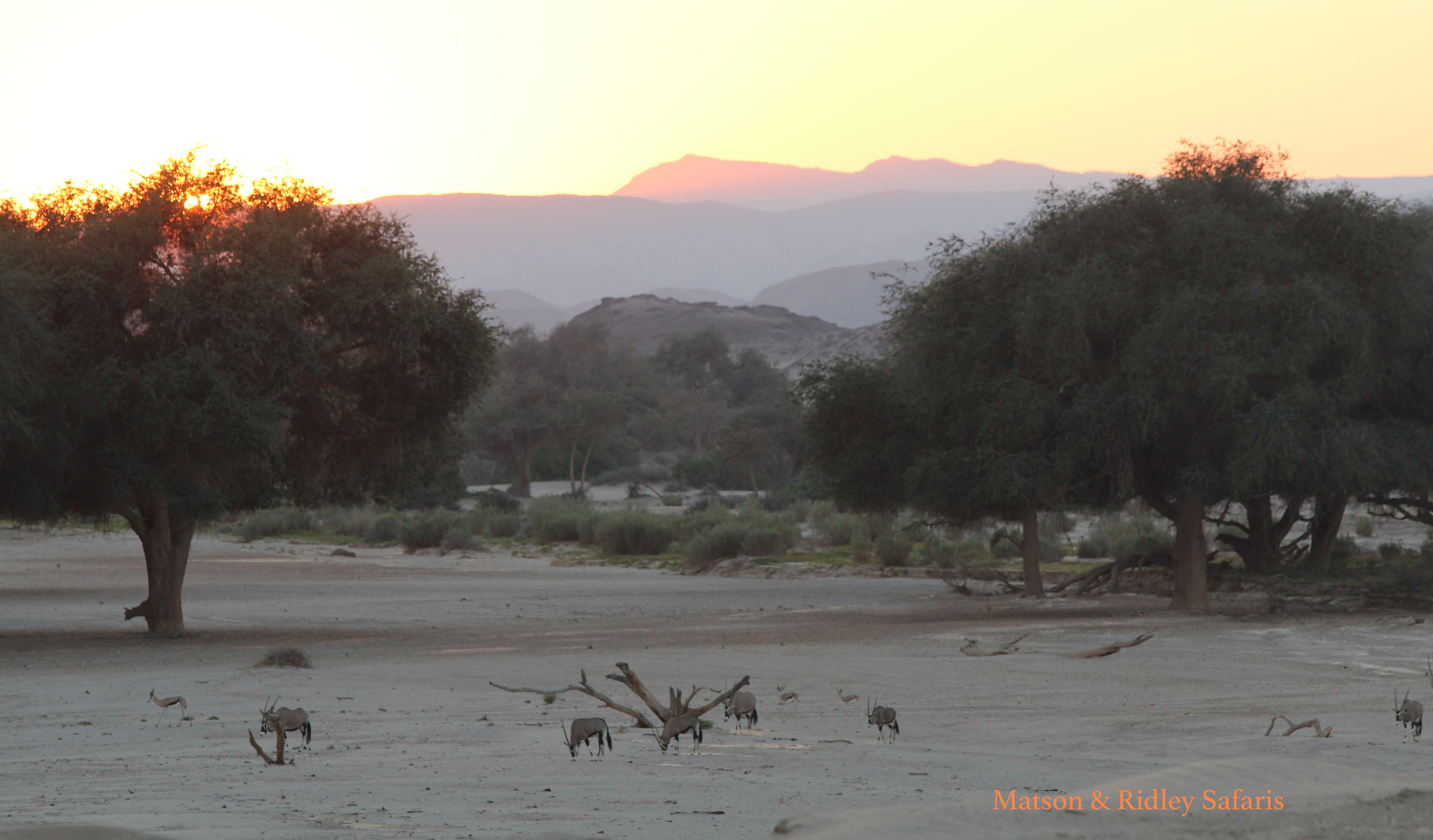
I love the dawn light in Namibia. There’s a short time where everything turns a rosey-apricot. Just before that time, all seems peaceful and cool, before the suns rays bear down on the desert sands. This photo of a herd of oryx was taken at sunrise in the Hoanib River. Just a few months earlier, this river had run, something very rarely seen in this neck of the woods. It had barely rained in camp, but there was more rain inland, enough to cause the river to run, and even a little rain makes a huge difference in arid landscapes.
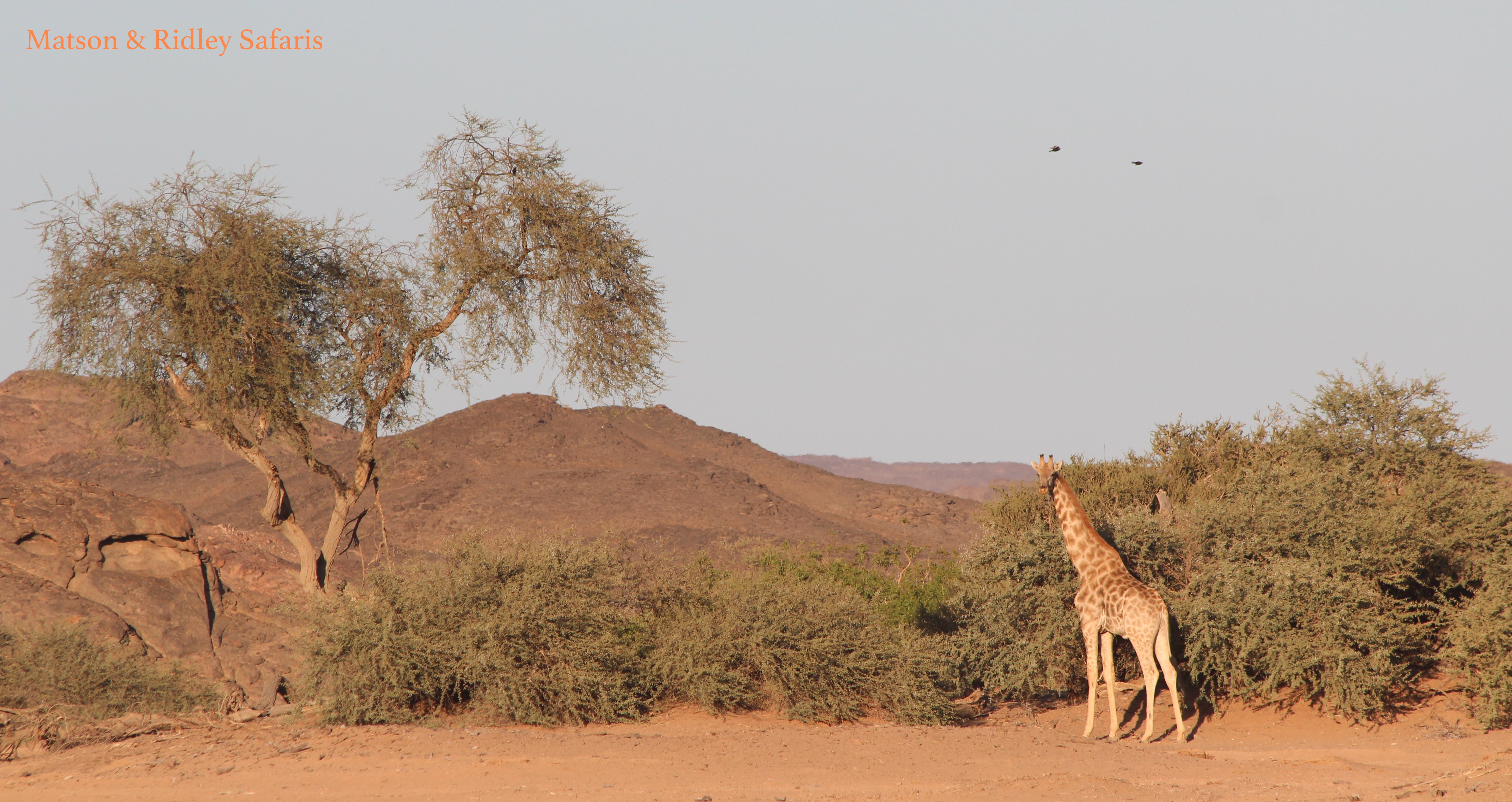
Desert-dwelling giraffes or desert lion-prey (depending on how you look at it!) are a frequently sighted species in the Hoanib River ecosystem. The tall, shady Ana trees (Faedherbia albida) that line the dry Hoanib River all bear browse lines at giraffe/elephant height and were providing a rich source of protein for many species with all their dropping pods when we were there. When you first arrive at Hoanib it’s like you’ve landed on the moon. You wonder how could anything live here with so little food and water? And then you go down into the river and you realise just how much life is there, and what amazing adaptations the animals and plants have to living in this hostile, arid environment. Our group loved hearing more about desert-dwelling giraffes from Dr Julian Fennessy on our last night on safari, and you can support the work of the Giraffe Conservation Foundation, one of the projects we at Matson & Ridley Safaris support, by checking out their website. And don’t forget 21 June is World Giraffe Day!
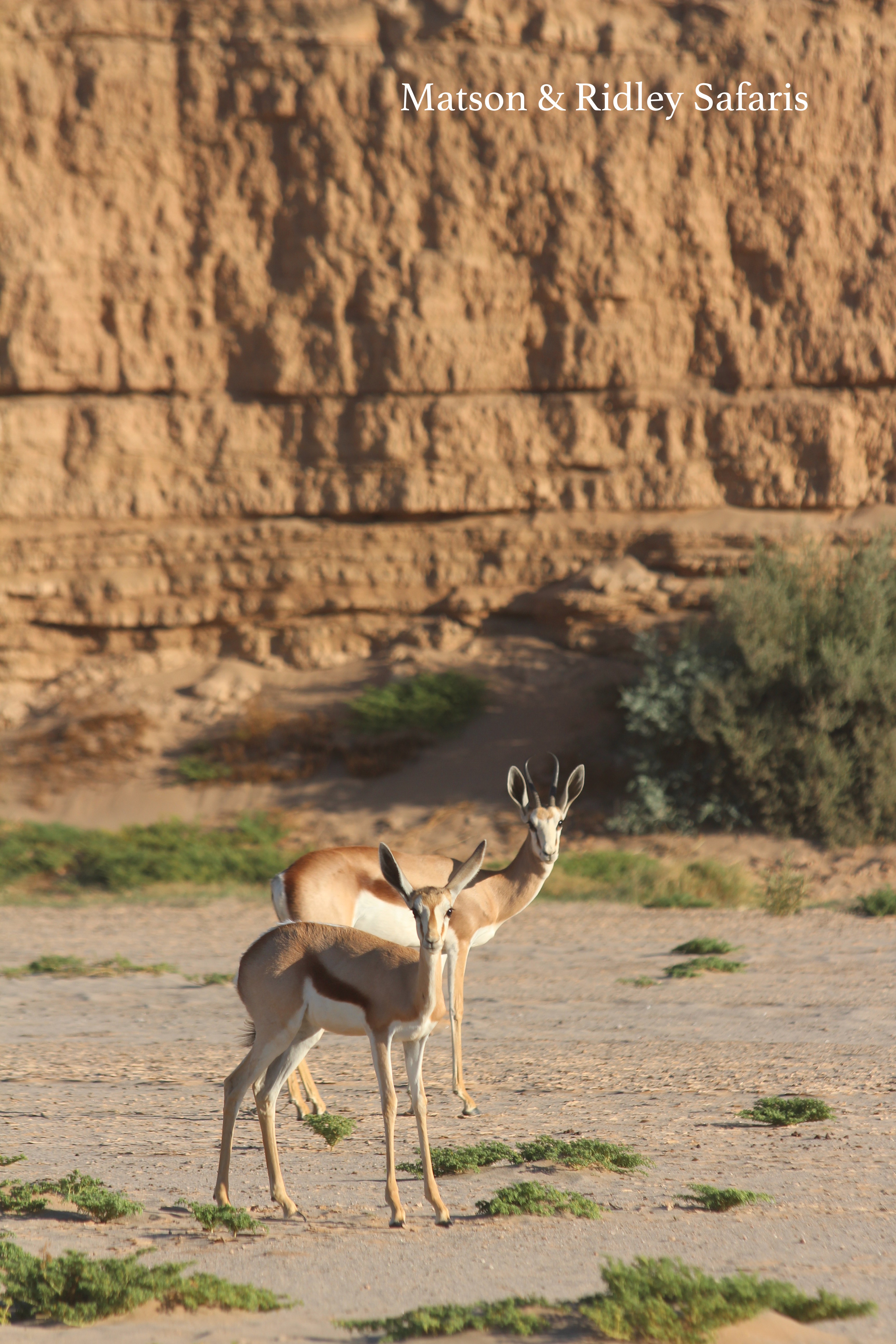
Springboks feast on freshly fallen pods of Acacia and Ana trees in the Hoanib River, as well as the water-filled ‘ostrich salad’ (seen here in the foreground). When the fog rolls in from the Atlantic Ocean about 60 km to the west, this replenishes the succulent plants that they eat, and so springbok rarely need to drink as they get enough water from their food. Unfortunately during our time at Hoanib the infamous ‘east wind’ prevailed on the coast, bringing very hot winds from the inland, preventing the fog rolling in from the ocean, and bringing temperatures up to almost 40 degrees Celcius in the sun. You can never predict the weather in this country! It was a fresh reminder to me that you always have to prepare for possible extreme heat and extreme cold in the desert.
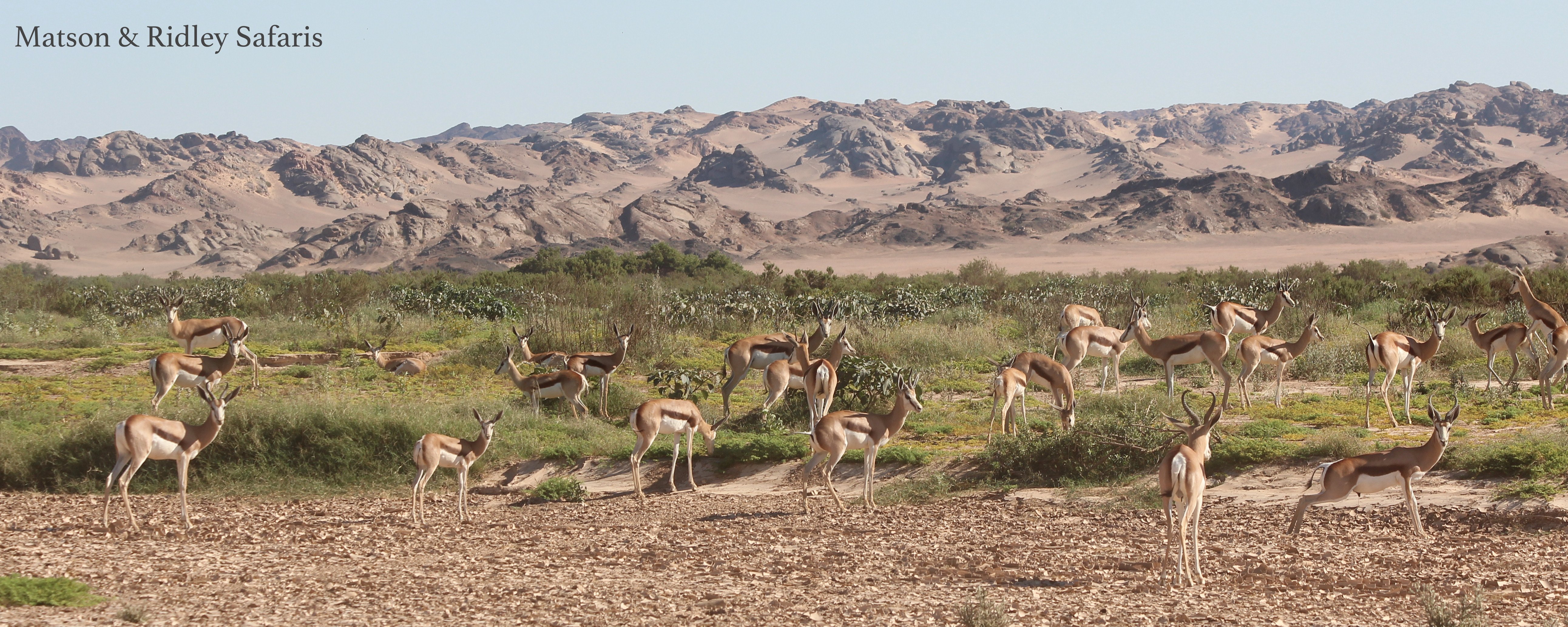
Springboks enjoying the green pickings while it lasts at the floodplain at the end of the Hoanib River near the Atlantic Ocean. Springbok are so well camouflaged in the desert and their white under belly allows heat to be deflected off the oven-hot ground as the day warms up.
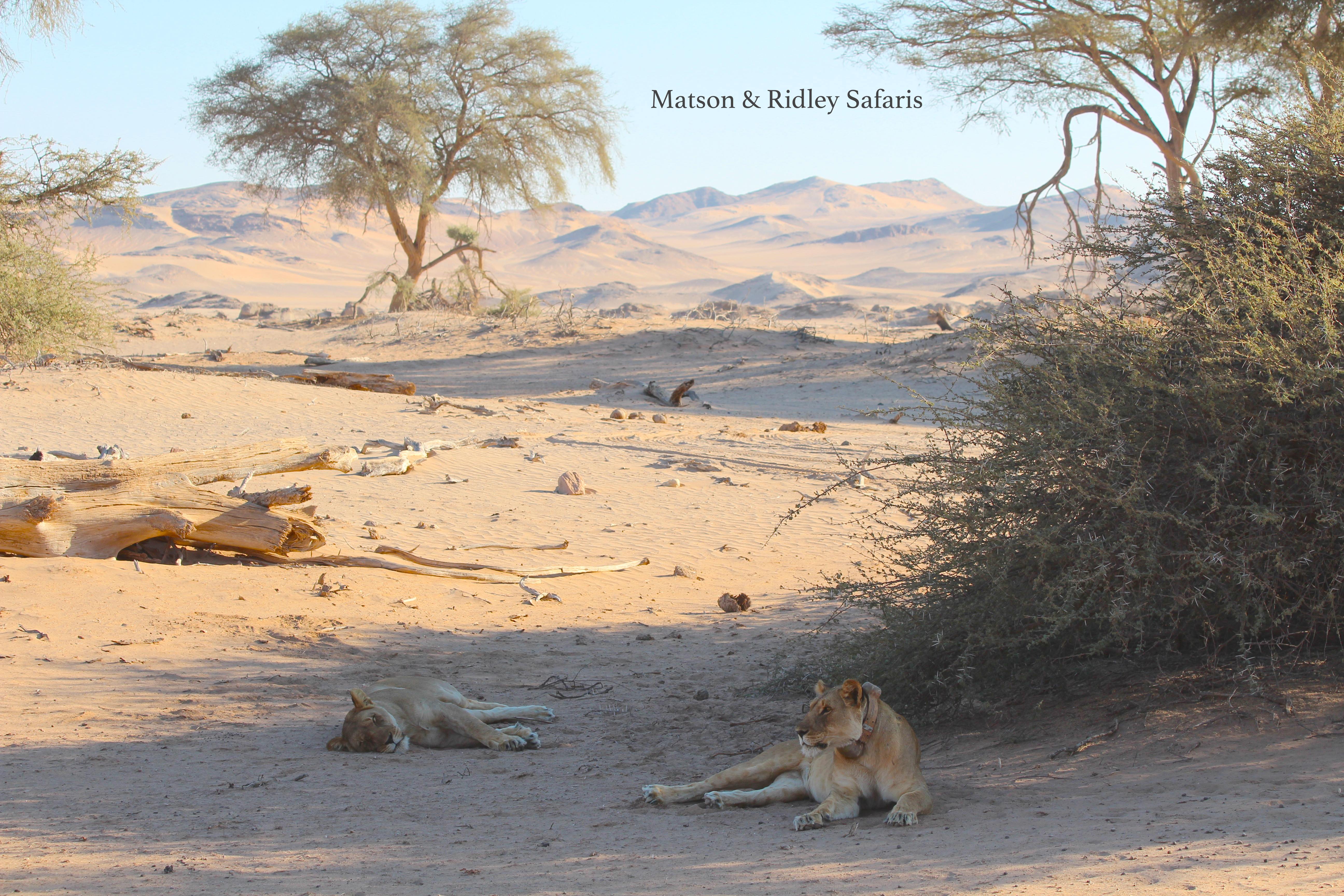
Just a few hours in to our drive to the Skeleton Coast, our Wilderness Safaris guides Elias and Liberty spotted fresh lion tracks. Searching for them on both sides of the river, following their tracks, we eventually found the two lionesses and 3 young cubs, lazing in the shade. The two lionesses are stars in the brilliant new National Geographic documentary, “Vanishing Kings“, and these incredible desert mamas provide for themselves and their offspring in formidable, harsh conditions. These lions are specialised giraffe hunters, no mean feat for just two of them. For a while there they were also feeding their 5 almost grown up sons! The desert-dwelling lions in this area are part of a long term study by lion expert Dr Philip Stander. They have huge home ranges and often must walk a very long way to find food in these arid conditions.
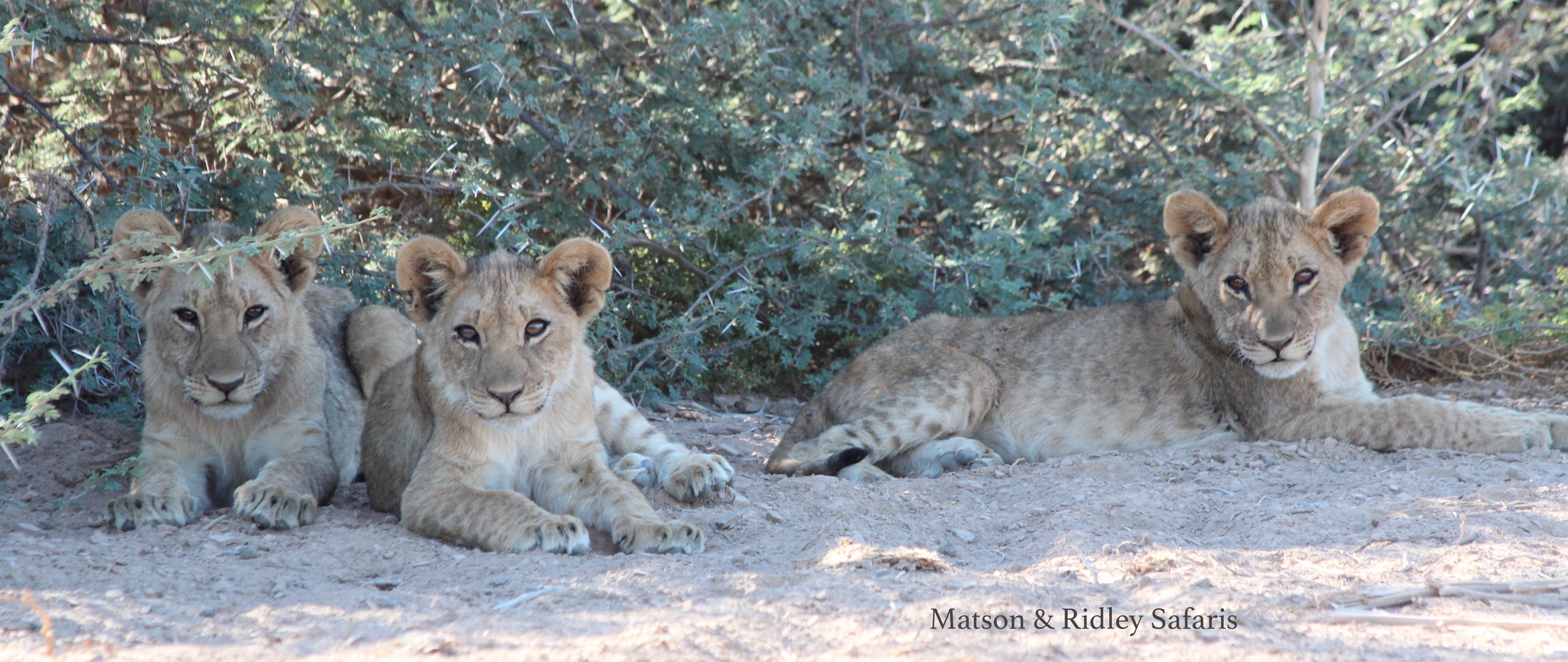
The next generation of desert-dwelling lions is crucial to the survival of this population. Desert-adapted lions often move out of protected areas and come into contact with people and their livestock in rural areas, creating obvious conflicts with local people who consider their cows to be the equivalent of money and status. They can be shot or poisoned by farmers who do not want them threatening their cattle. While we were there, the ‘five musketeers’ (the 5 lions who are the offspring of these two females, now fully grown) had wandered up to Purros Conservancy and out of the safety of the park, creating concerns among the staff at Hoanib Camp. We wondered what the future held for these 3 small female cubs. A fourth cub, their sibling, had been washed away in the January flood. At least with the two lionesses teaching them how to survive, they have great examples to follow.
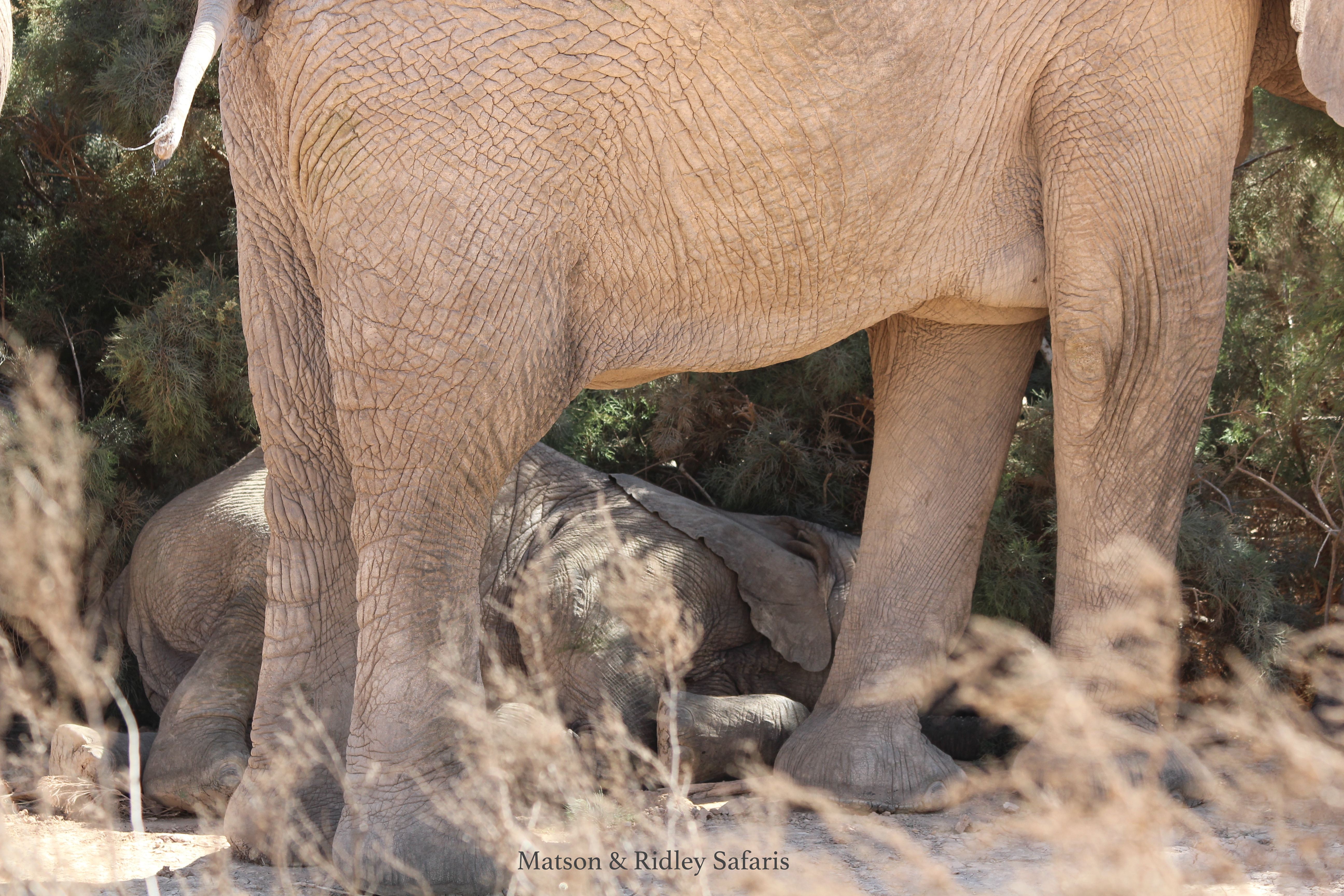
When a baby elephant lies down beside its mother right beside you, you know it’s feeling pretty relaxed. It’s a privilege to see this. In other parts of Africa, elephants can never relax due to the presence of poachers for the ivory trade. This herd of desert-dwelling elephants move up and down the Hoanib River, feeding on the Ana trees and other shrubs along the length of the sand river. We all enjoyed the ‘elley-therapy’! Note the wide feet of the desert-adapted elephants, suited to sliding down sand dunes and walking on sand over long distances.
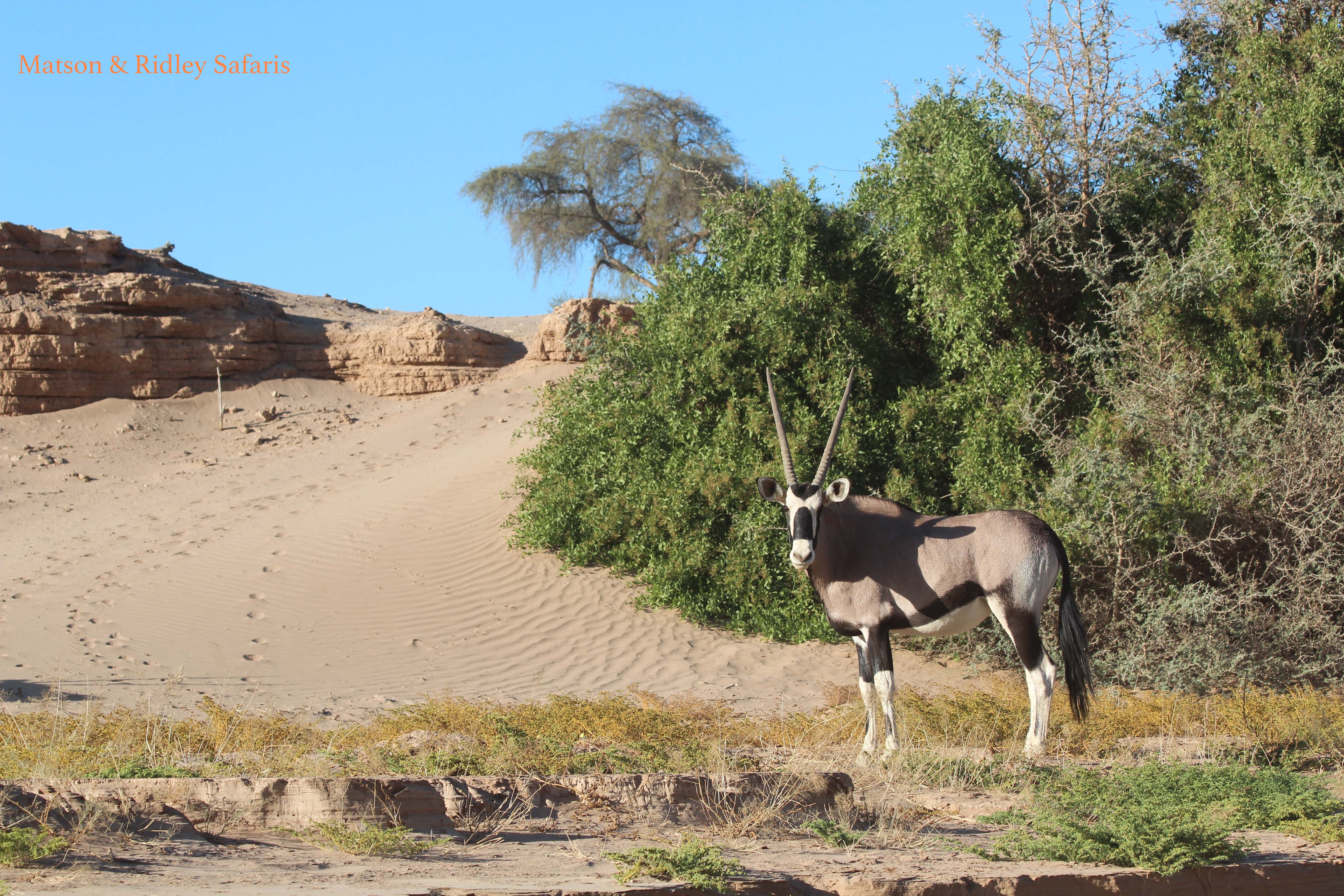
Oryx antelope – one of the most regal of all the antelopes, and the perfect desert survivor. Note the white underbelly and white on the lower legs for reflecting heat. The oryx practices nasal panting, which prevents the brain from overheating when standing in the desert sun at extreme temperatures. Like the springbok, they barely ever need to drink, gaining enough water from their food.
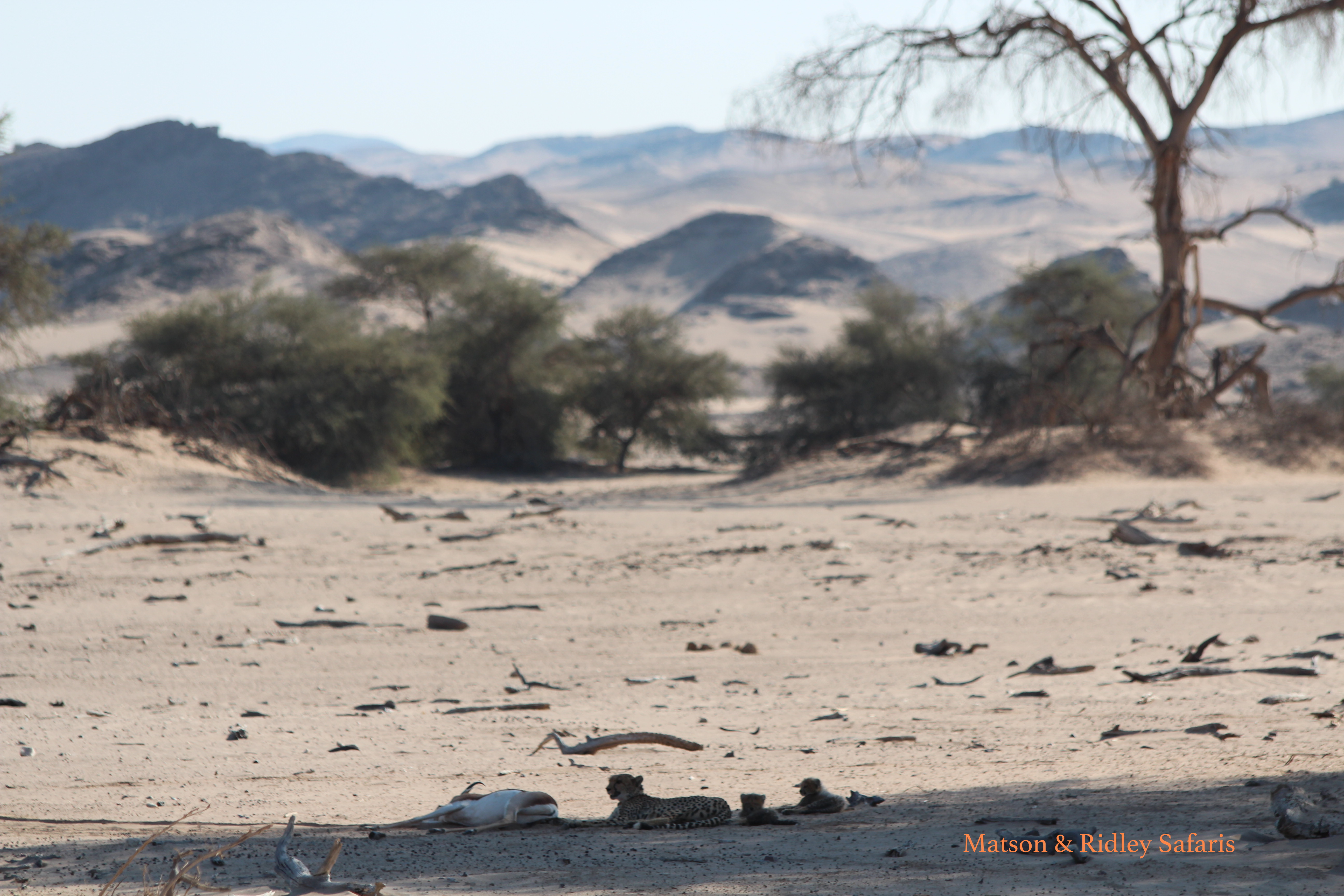
This is something you don’t see every day! The photo isn’t the greatest but this was a rare sighting indeed. It started with our guide Elias spotting fresh cheetah tracks in the sand, but you could tell there were predators around as there wasn’t much game around this area. Then Leonie spotted her – a cheetah mother with small cubs! We kept our distance, giving her space, as with young cubs she was more wary and we didn’t want to spook her. And then as we patiently sat there, she crouched down and became very interested in something in the river. It was a male springbok. Well now things were about to get interesting. It’s one thing to see a cheetah in this environment, but quite another to see one kill a springbok, with two cubs running along behind her! It took the female almost half an hour to cool down after making the kill and dragging it into the shade. The two cubs were impatient to eat, tugging on the ears of the springbok and trying to open it up (without success!).
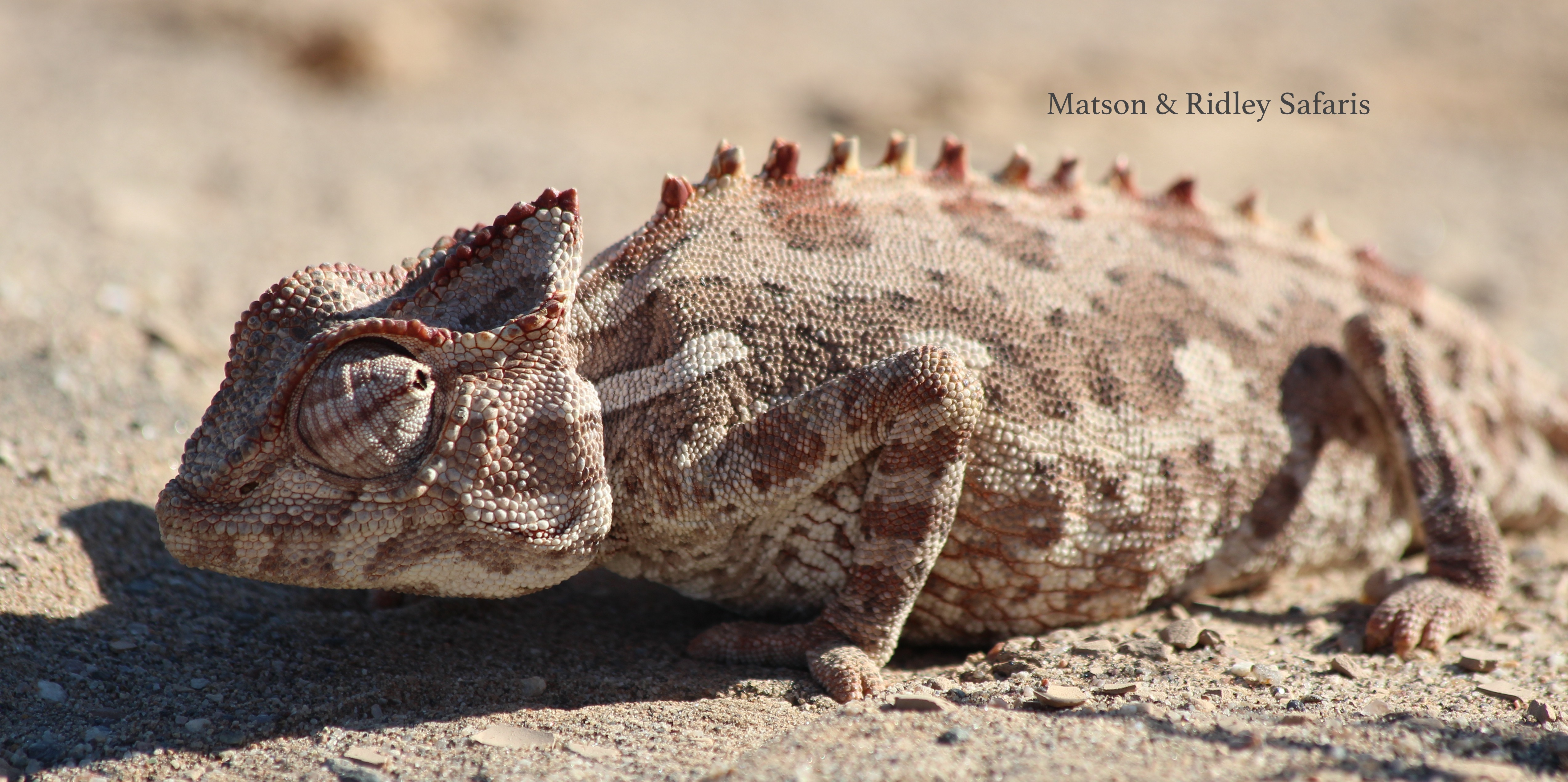
If I didn’t know better, I’d never have known this chameleon was heavily pregnant with eggs, but you can see from the size of her belly. She was on the road, and our guides kindly surrounded her with big logs to stop other guides driving over the top of her. Below you can see the eggs she had just laid, something I had never seen before. In fact until this day I never even thought about how baby chameleons arrive in the world, so now we know!
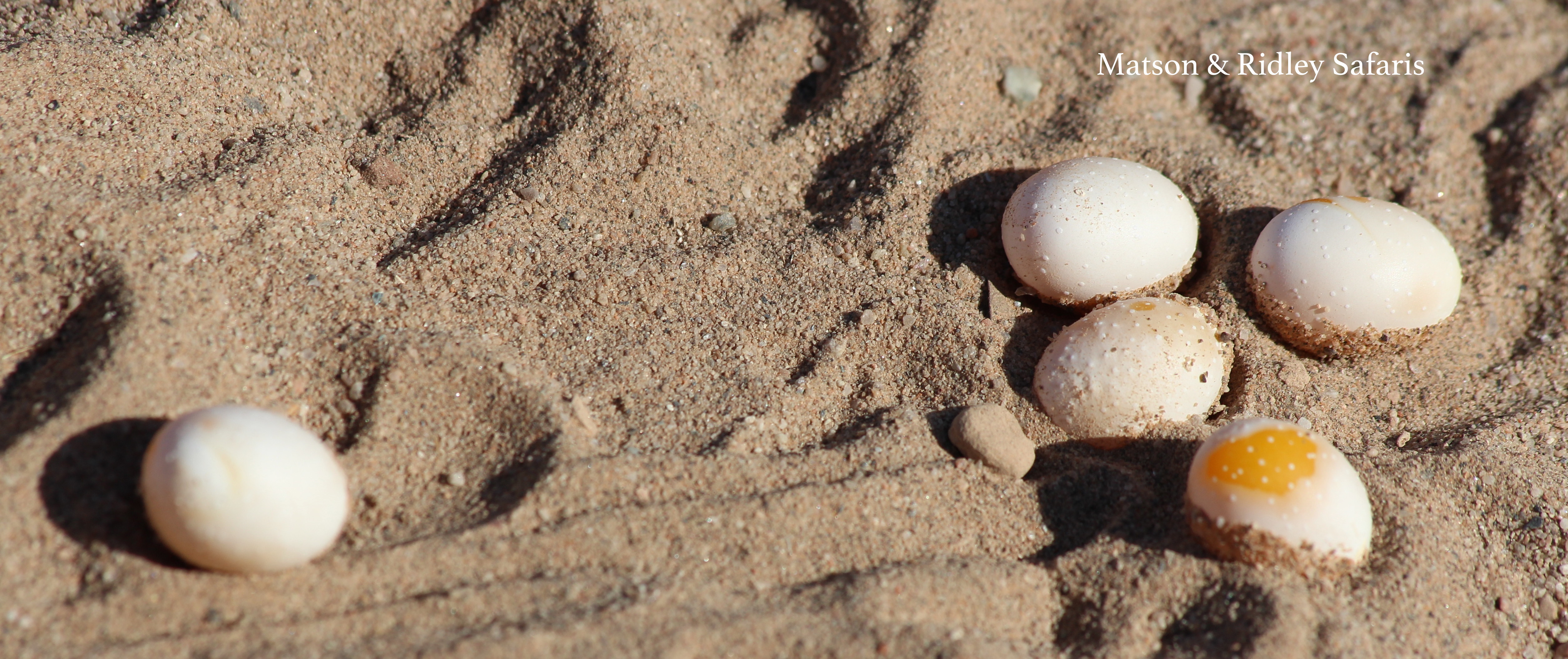
Eggs of said chameleon above. The guides told us she would bury these once we left her alone. What a thrill to witness this!
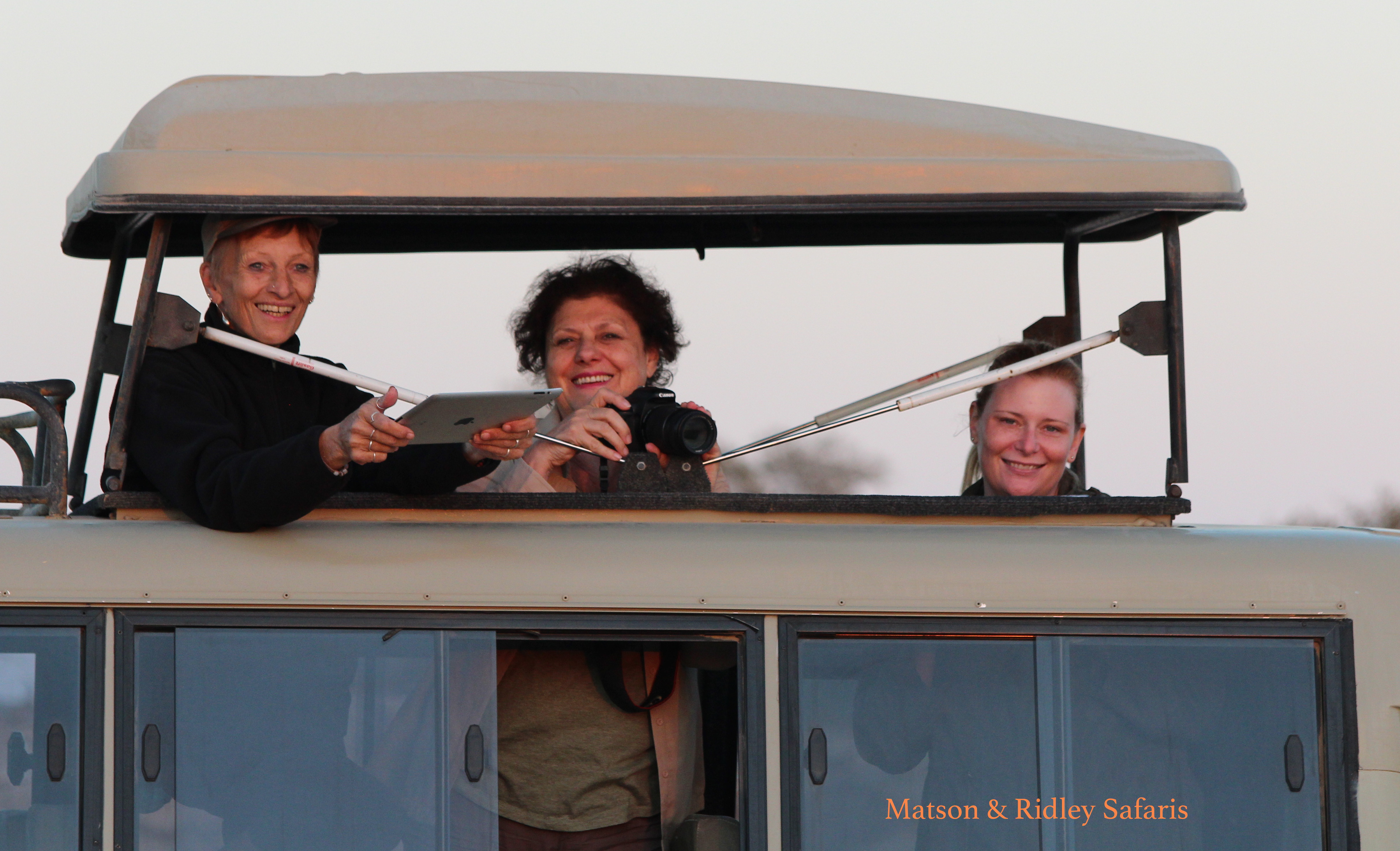
Maggie, Leonie and Joanne, ‘the Aussies’, watching the sun rise in the Wilderness Safaris land cruiser. We had everything from Canon and Nikon SLRs to iPhones and iPads in our collection on this trip. Helen brought along a new 600mm lens for her Canon SLR which really gave a good view of the wildlife, especially the kills. I had my 100-300mm Canon SLR which I used for all of these photos. I’m looking forward to seeing everyone else’s best shots. Post them on our Matson & Ridley Safaris Facebook site if you like!
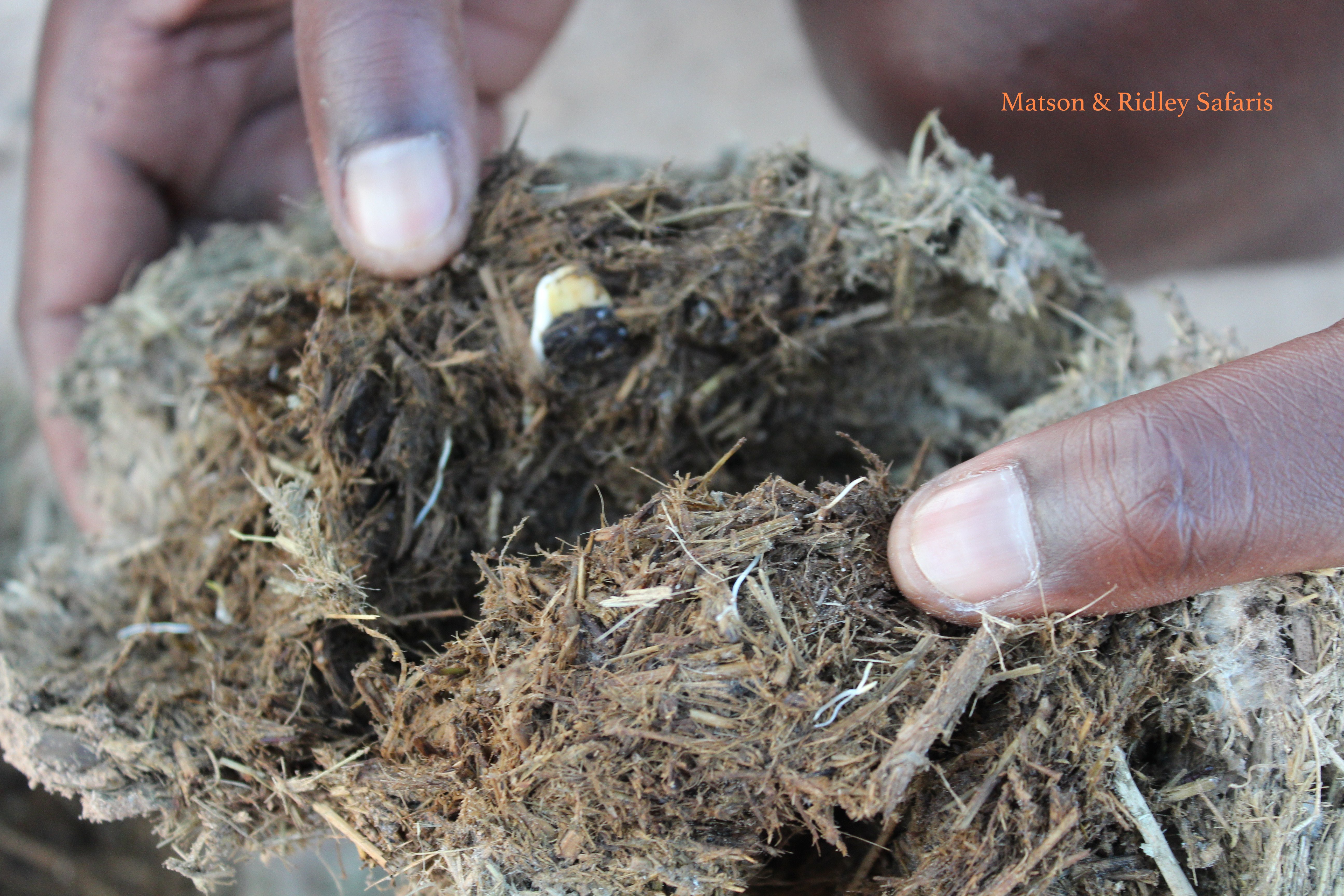
On an afternoon walk, I opened up a ball of elephant dung that was still wet inside and discovered fresh seedlings of Ana trees. I often talk about how elephants distribute seeds through their dung and it was very cool to see the seedlings literally germinating inside this dung. Elephants are keystone species and the whole ecosystem depends on them.
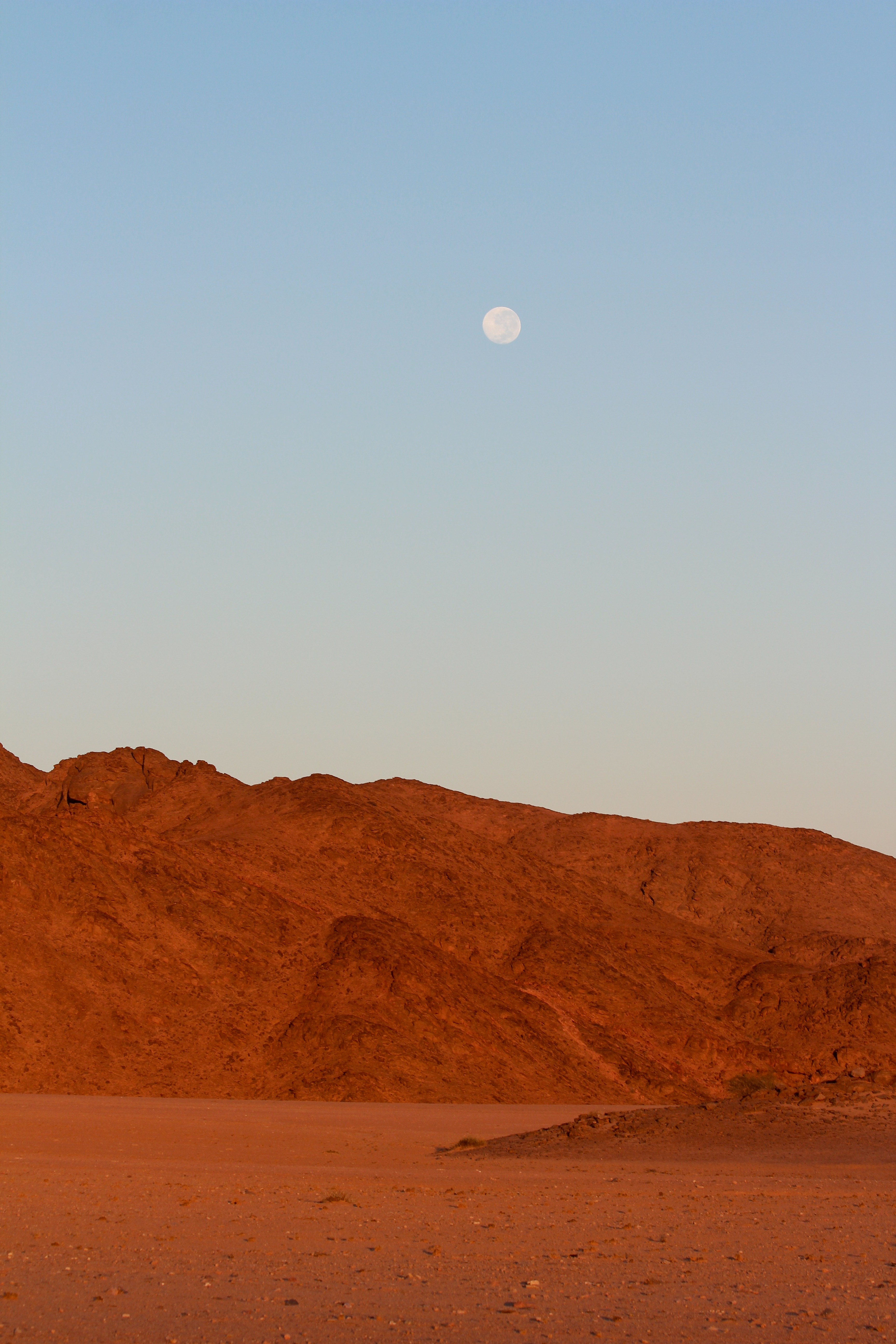
Dawn light is so amazing in the desert, although fleeting, and the full moon while we were there made for a really striking sight. A big ‘awww’ moment! It’s the landscapes and the space that make Namibia so amazing. It’s a place to leave your mobile phone behind and just reconnect with nature and yourself.
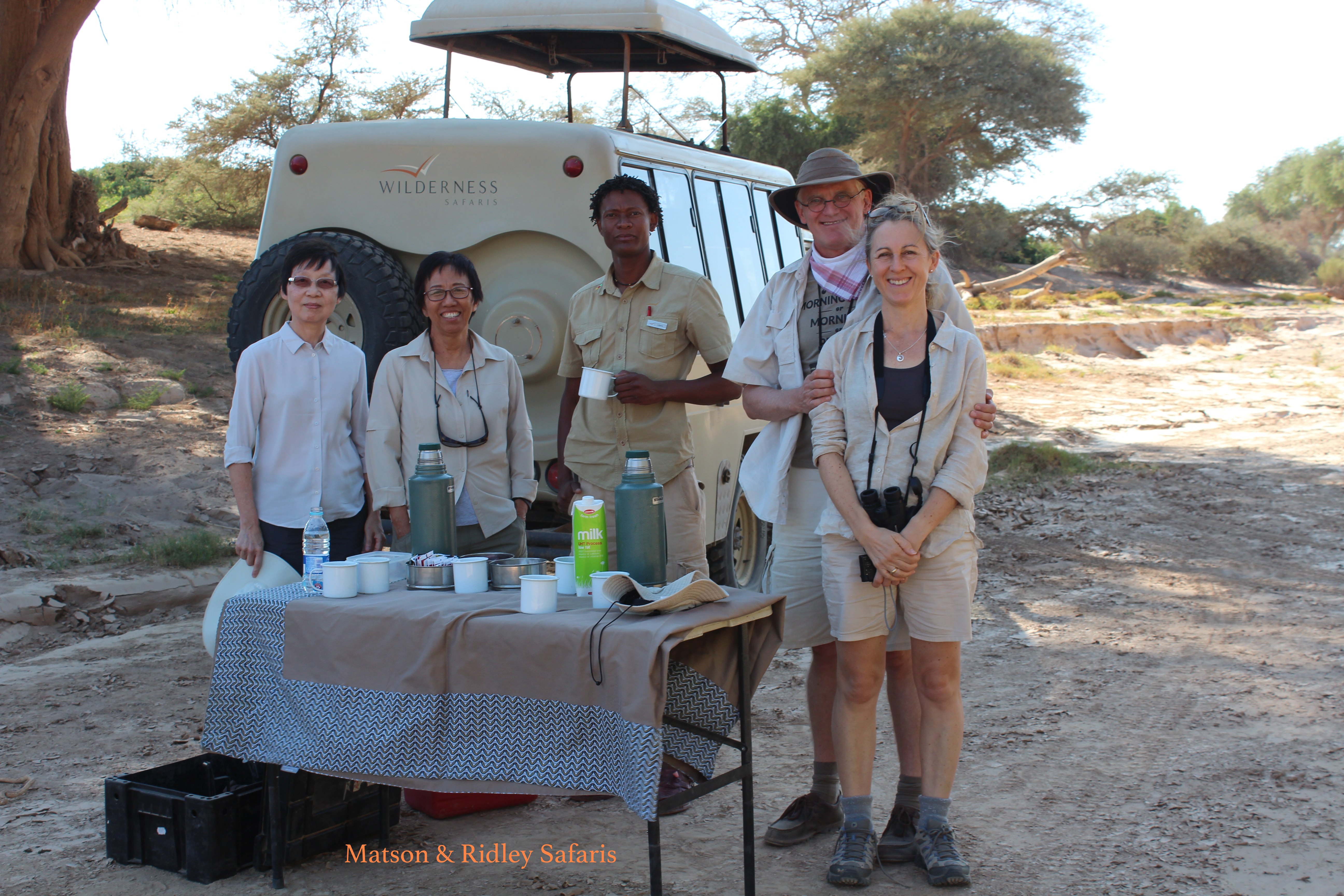
Tea time in the bush is always welcome. By mid morning, when you’ve been on a game drive since dawn, it’s definitely time for a cup of Five Roses South African tea and a home made biscuit, as well as a trip to the bush loo (after a quick check for puff adders and western barred spitting cobras). Here we pulled up in the Hoanib River bed, making sure that we were far enough away from the lionesses! Left to right: Patricia, Chuan Fong, Liberty, Tristan and Carina.
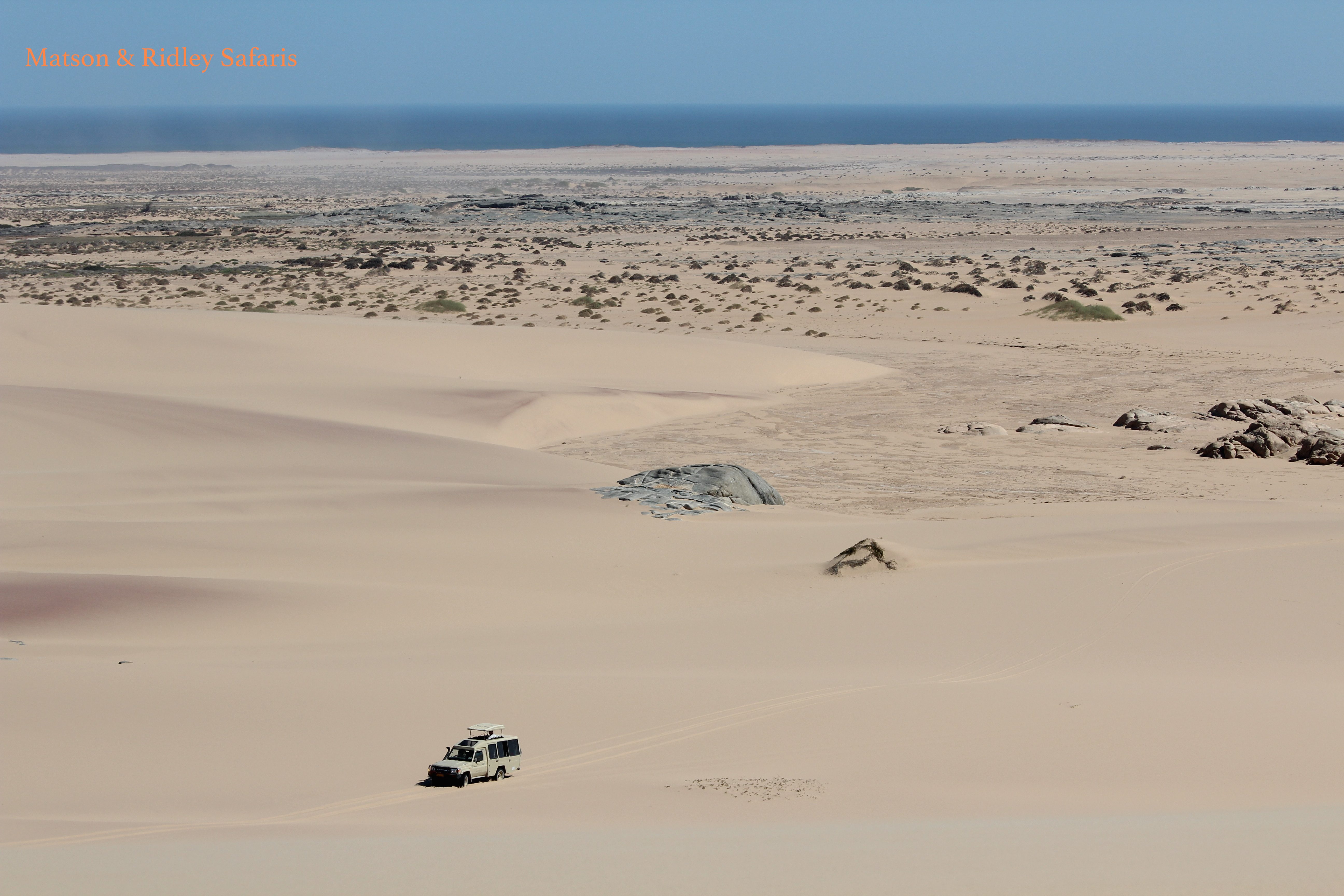
That first sight of the Atlantic Ocean in the distance as you cruise through the dunes through the Skeleton Coast is breath taking! This fragile ecosystem survives due to the fog, which creates moisture in an otherwise arid ecosystem.
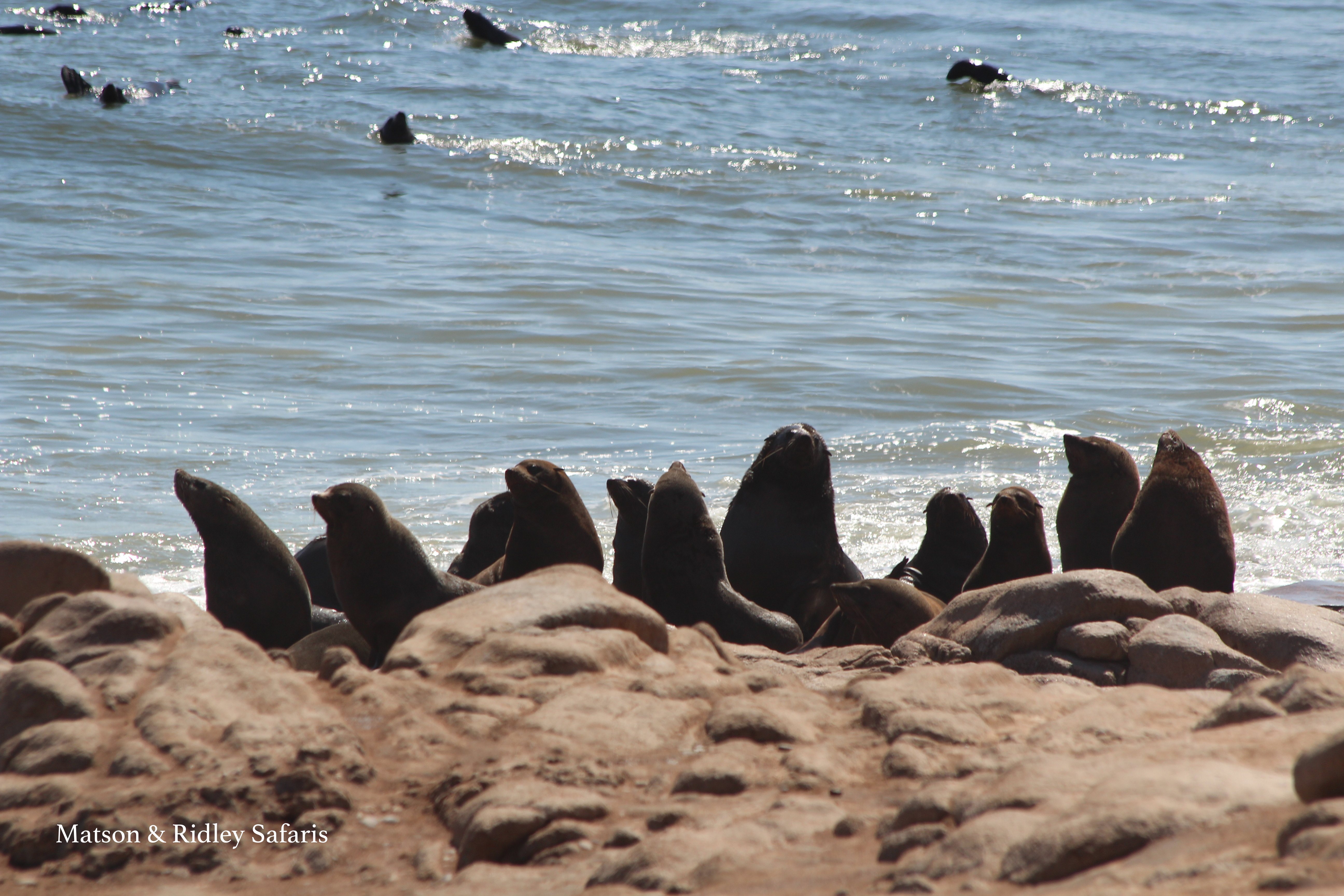
Cape Fur Seals form large colonies along the Skeleton Coast line and provide food for brown hyaenas and jackals (and sometimes lions). Lots of them were in the water on the day we visited, due to the East wind making it so hot on land. This photo was taken just near Merwe Bay.
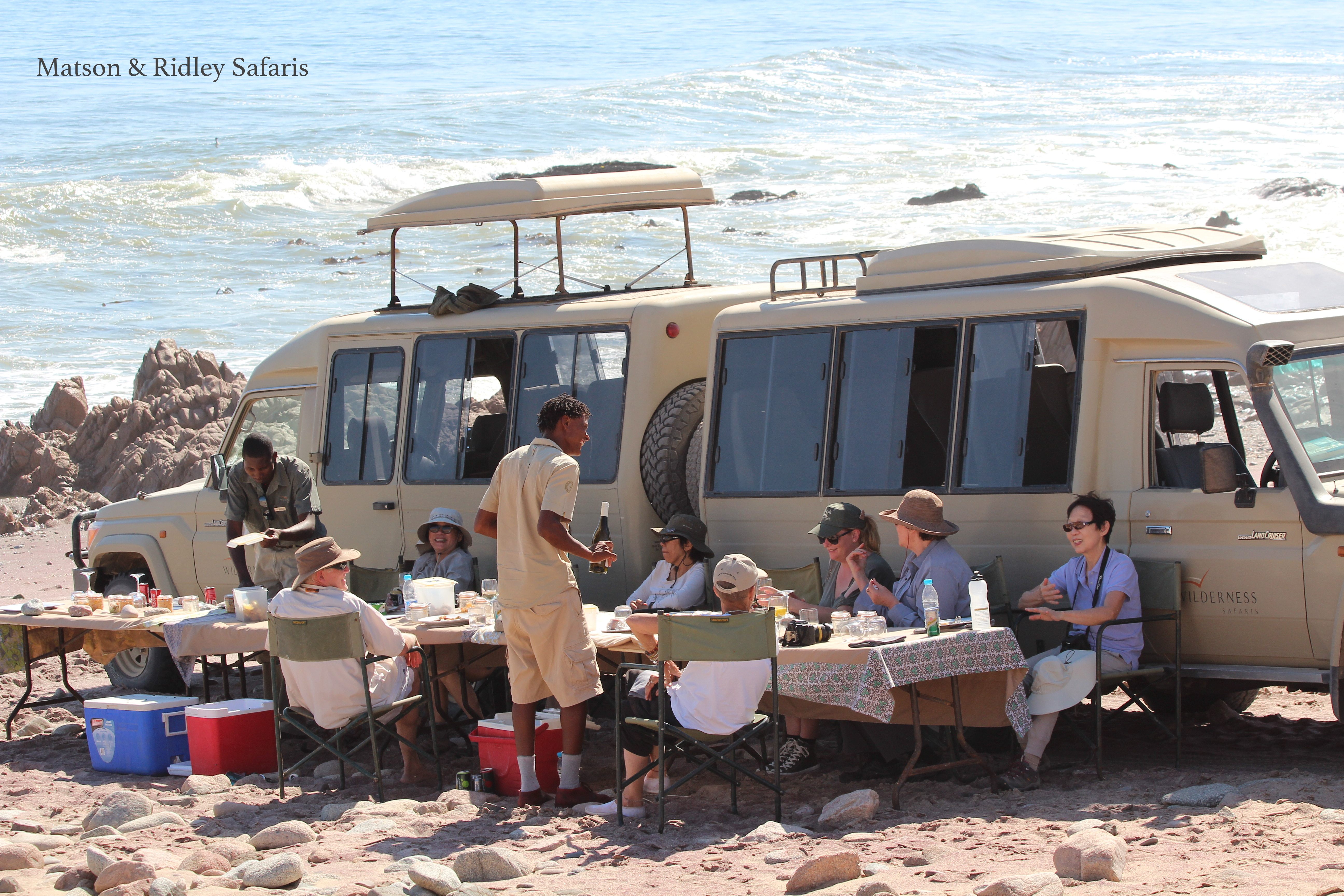
A much needed bit of shade beside the Land Cruisers was taken advantage of during a desert lunch and a wee drop of some fine wines.
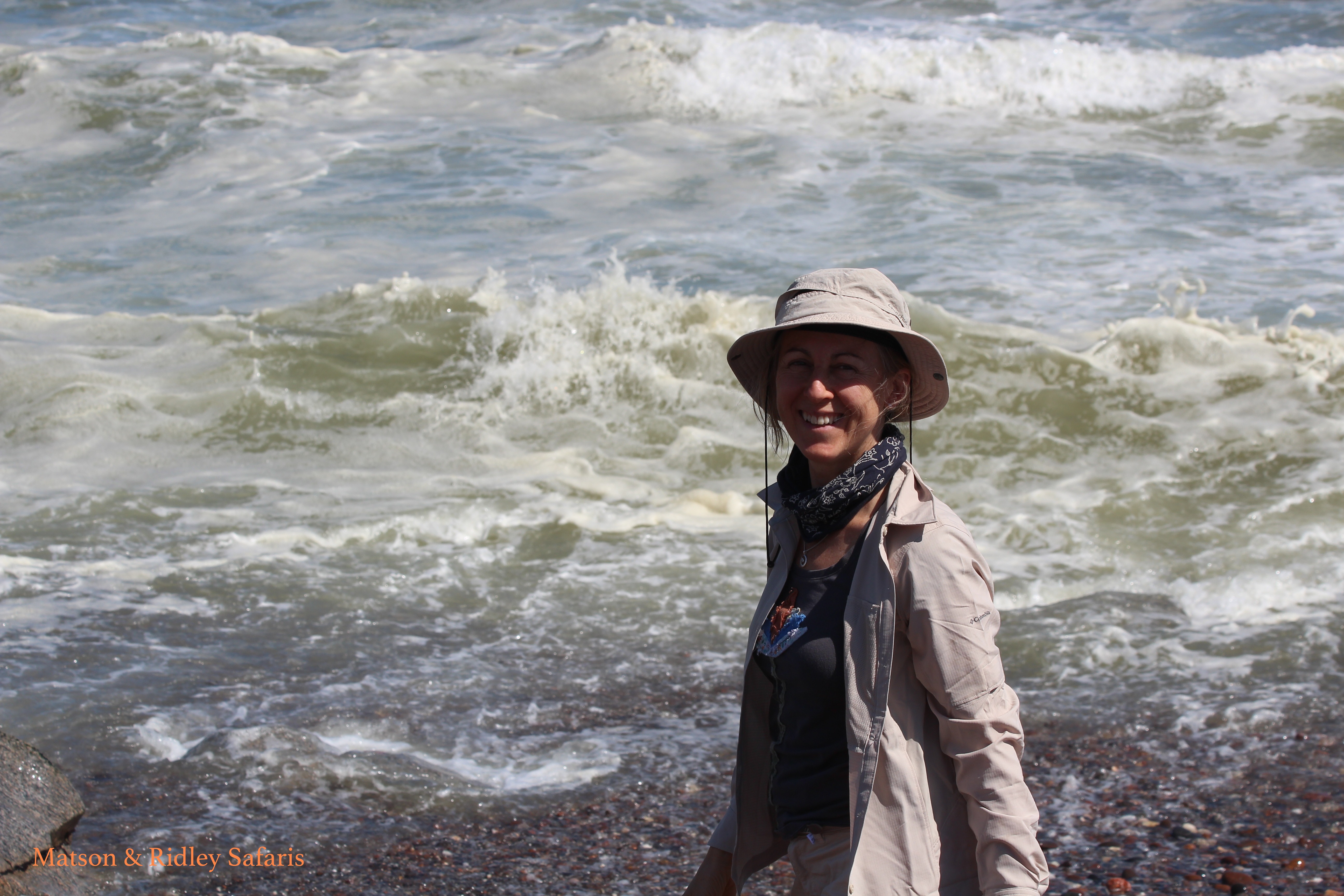
Carina by the sea…. The energy you get when hitting the sea after a long drive through the dunes is something else!
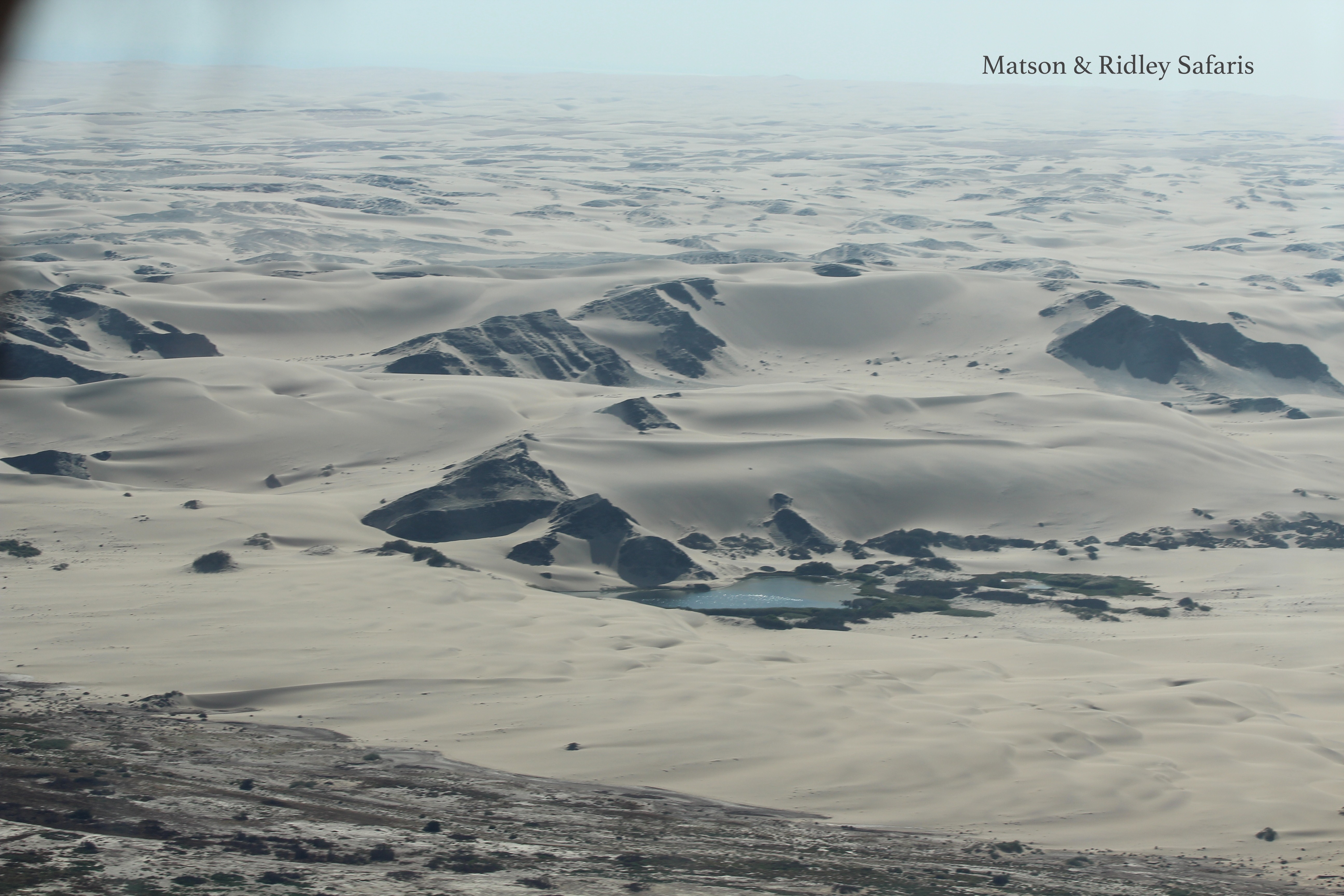
Something you rarely see – water in the desert dunes! This photo was taken from the plane on the ride back to Hoanib Camp. After the flood in January, there are still some waterholes left, creating amazing desert oases at the Skeleton Coast. This water will deplete and it could be another 5 years before the Hoanib sees another water flow.
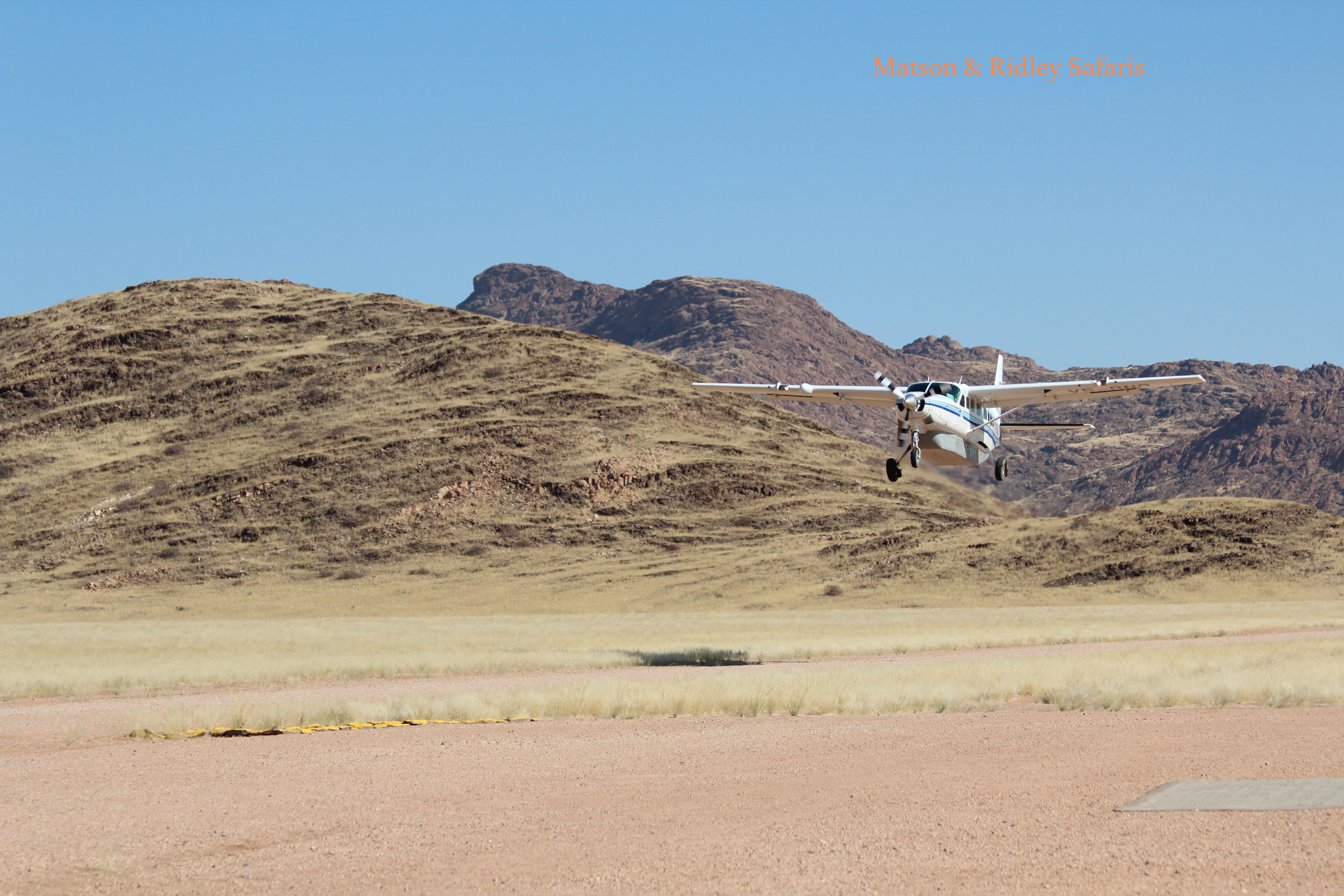
After 3 days at Hoanib Camp we set off for Serra Cafema, an hour’s flight north on the border of Angola. I’ll be blogging out it, with some incredible photos of this region and its traditional people, next week. Here’s a sneak peak, below…. And more photos coming at our Facebook page, so please like us at Matson & Ridley Safaris on Facebook to see them.

